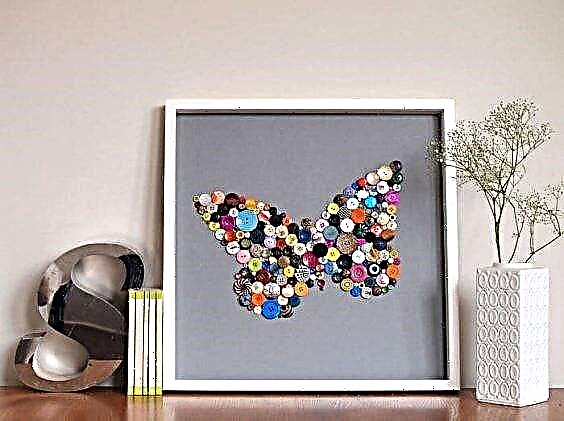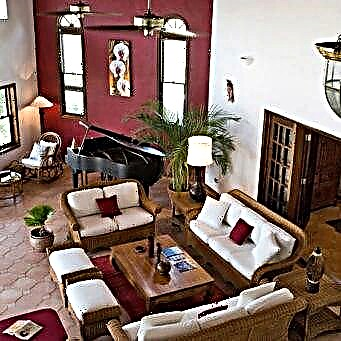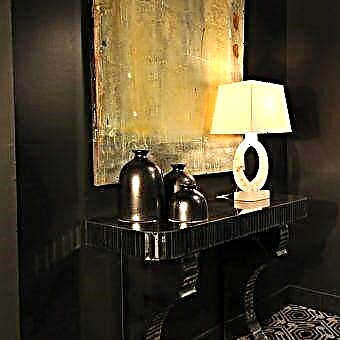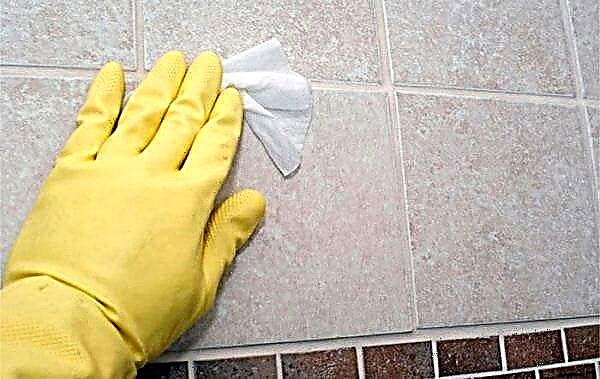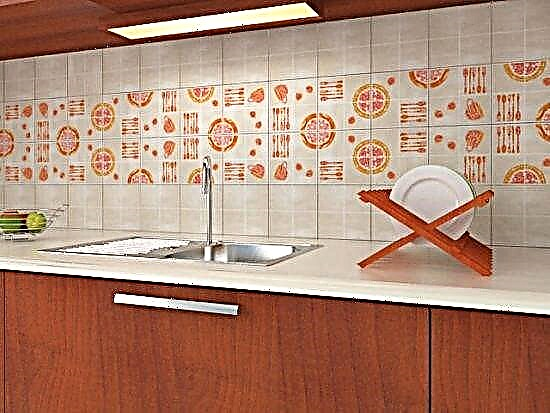In the design of a modern style, combinations of all kinds of variations are welcome. This is not only a combination of different color palettes, but also a combination of opposing materials and textures.
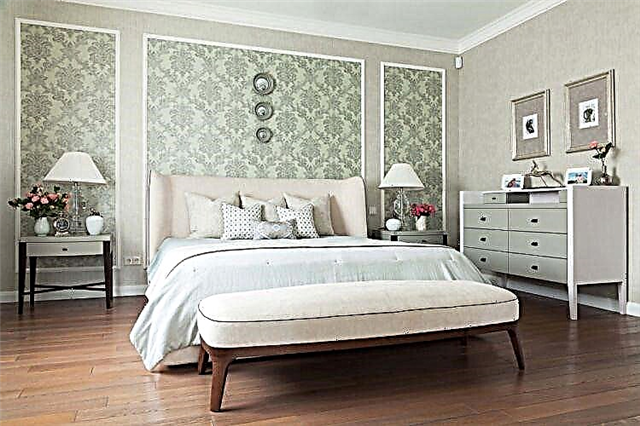
It is worth noting that thanks to the combination of wallpaper in the interior, not only decorative effects are created, but also the size and area of the room visually change.
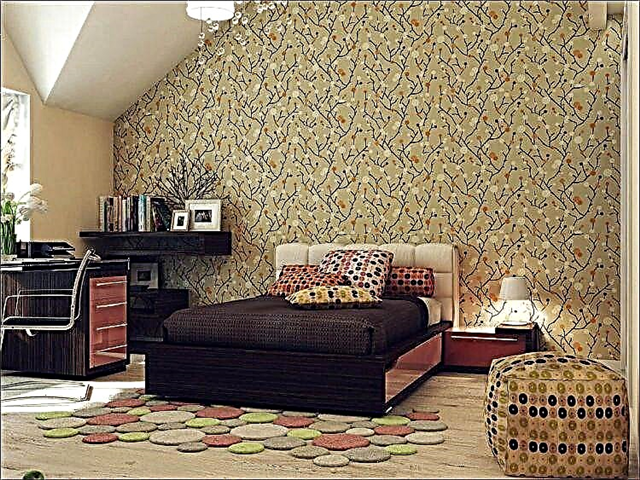
Such a combination will help zoning the room, and if used successfully, you can mask the flaws. But to achieve maximum results, you need to know certain rules.
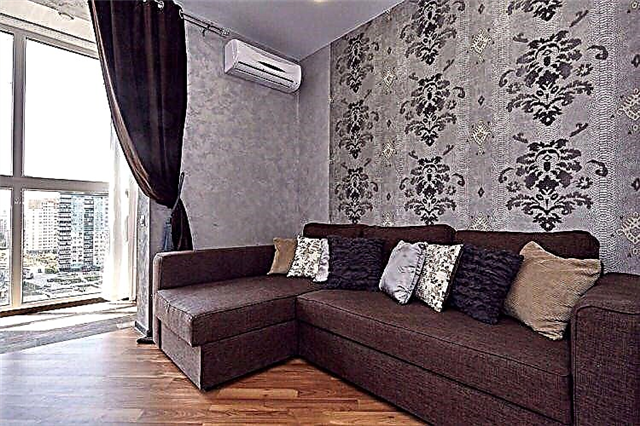
Get rid of the flaws
To focus on a specific place in the room, visually highlight it, it is enough to stick a wallpaper of bright colors, or with an original catchy pattern.
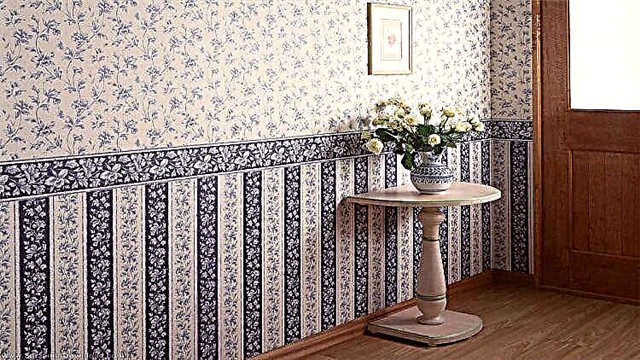
Thanks to this reception, the attention of all visitors to the room will attract a dedicated area. At the same time, the disadvantages present in other parts of the premises will not be so significant.
The more you want to hide the flaws, the more vivid the picture of the main part of the room you need to choose. You can borrow ideas from photos of combined wallpapers.
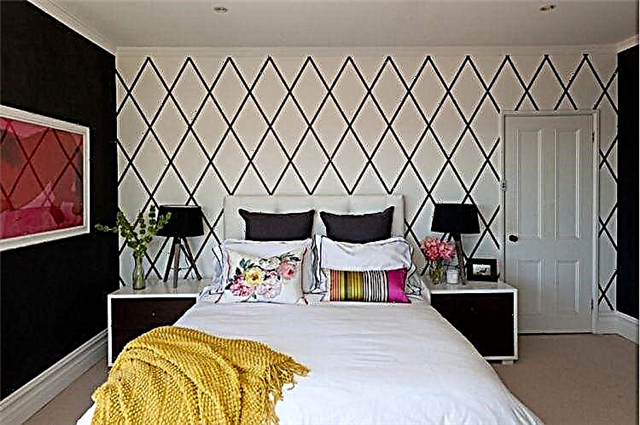
Zoning Principles
Creating different functional zones in a room is not only a beautiful, but also a practical solution. There are various ways to accomplish this task.
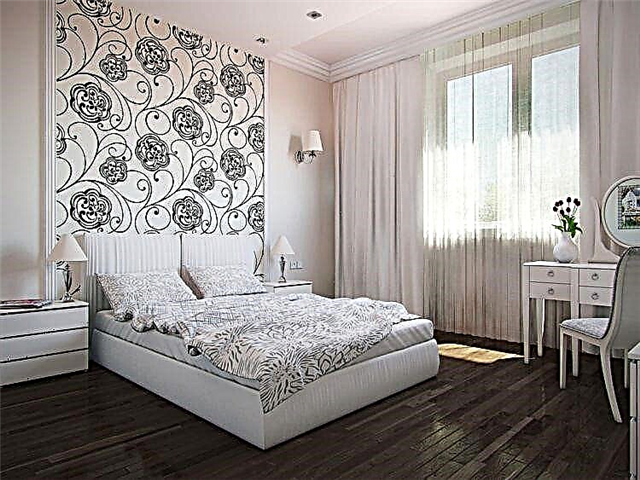
The easiest and most affordable way is to use the design of combined wallpapers. The functional area is distinguished by contrasting color, wallpaper with a contrasting pattern.
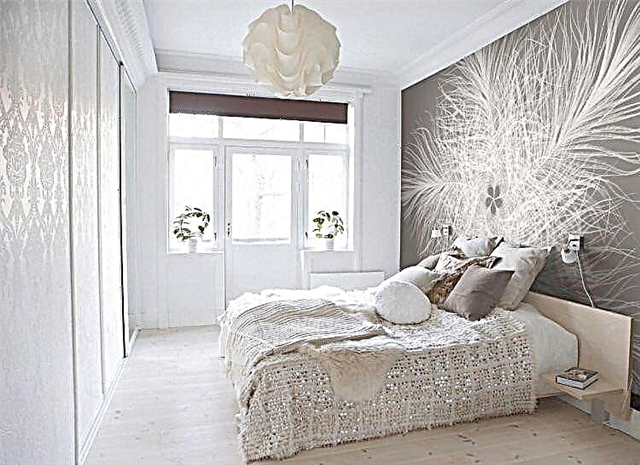
Do not be afraid to experiment, you will receive the most daring and original solutions.
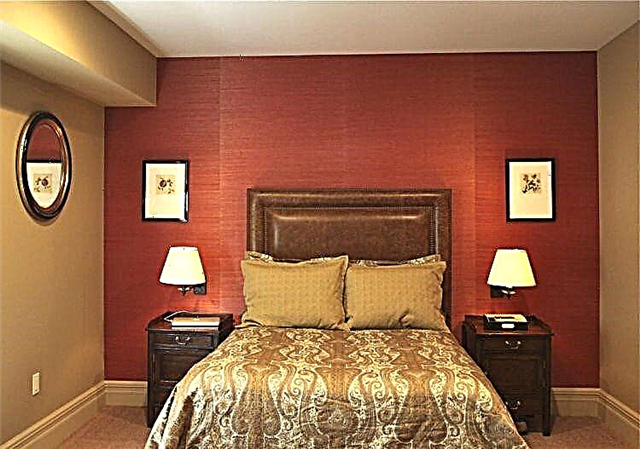
The choice of zoning method depends on the purpose of the zone that needs to be allocated, as well as on the presence of partitions in the room.
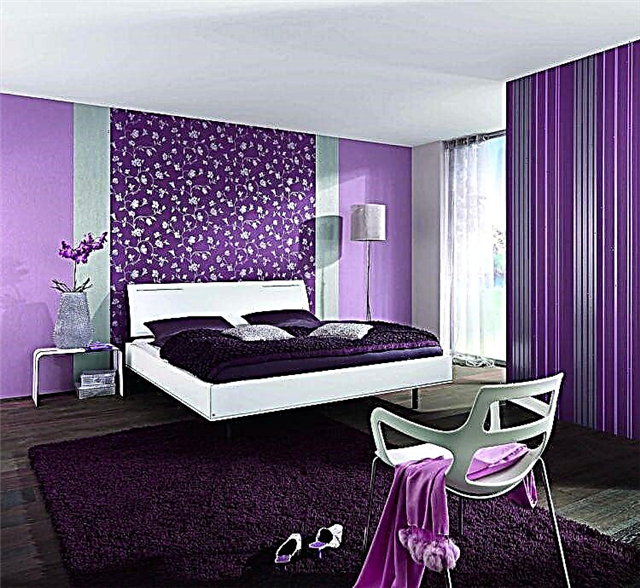
For example, when we combine wallpaper in a hall or a children's room to divide it into even parts, it is recommended to paste half of the room in a bright color, and the second in more restrained shades.
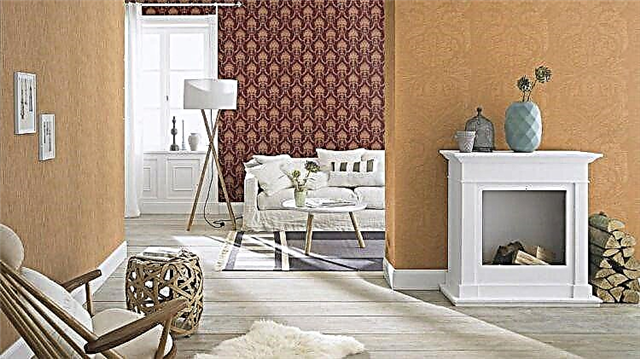
To complete the task, install a decorative partition.
Beautiful design of combined wallpaper (photo)
Choosing the repair option in the house through a combination of different wallpapers, you need to keep in mind the size of the rooms, their configuration and purpose. With the right combination of coatings, it is possible to obtain the following results:
- visual increase in the area of the room,
- concealment of minor damage on the walls,
- saturation of the room with additional light,
- allocation of certain areas,
- creating an emphasis on stylistic features.
To give a unique style, you can use only a few colors that are similar to each other. This range of shades can be applied using a specialized circle with a color chart.
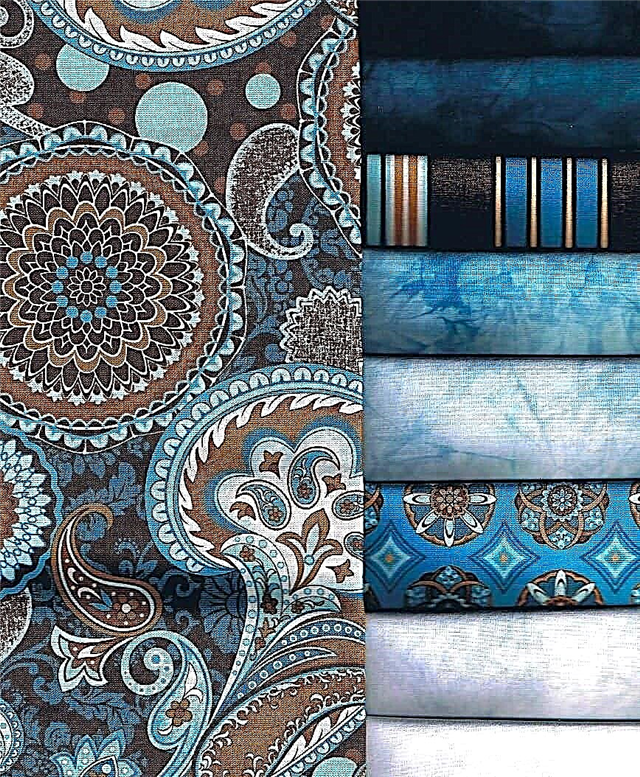
Properly selected wallpaper will help to emphasize the special style of any room
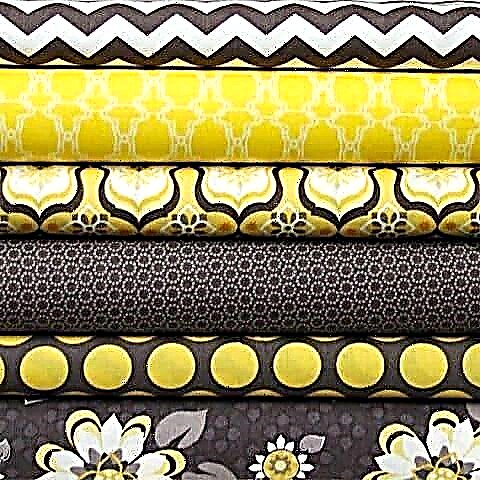

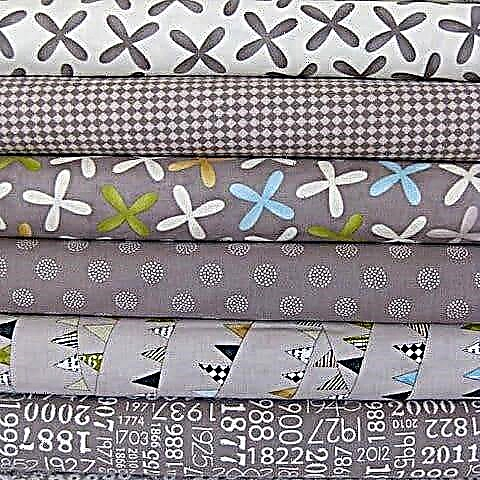
Basic combination rules
The combination of wallpaper in the hall is a solution often used by designers. The combination should not be random and wild. There are special rules for this that will allow you to achieve a beautiful junction of opposites.
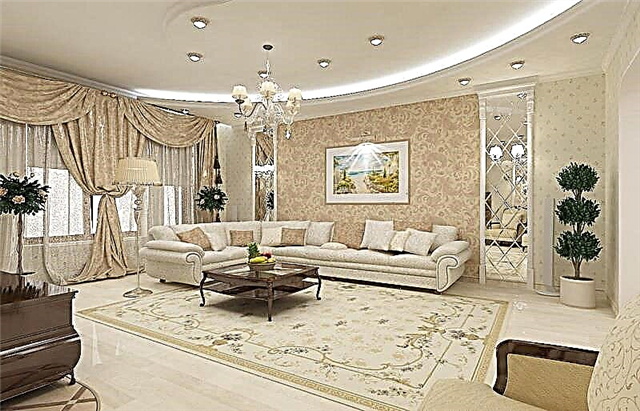
How to combine wallpaper in the hall of two types? There are several factors to consider:
- Estimated design. Wallpaper is glued at the pre-finish stage and the interior plan must be approved. Depending on the chosen style, you can find the desired color, background and wallpaper pattern.
- Texture. Textured canvases can be smooth, embossed, textured.
- Drawing. One way or another, some wallpapers in the interior should stand out from the others. Therefore, even with a different pattern, they must be combined with each other.
- The ratio of wallpaper and curtains. Walls and accessories cannot but be combined and be alien to each other.
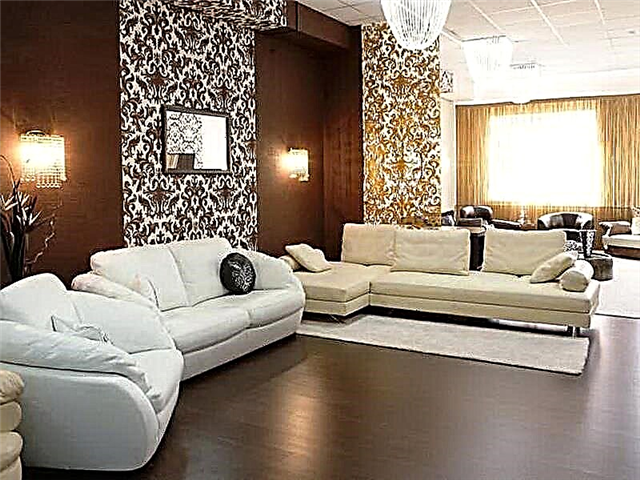
Combination with horizontal stripes
The horizontal orientation of the hall wallpaper in the apartment has the following advantages:
- Easy integration with other drawings. Wallpaper in the hall combined of this type can be easily combined with monophonic canvases and similar striped ones.
- The increase in the room. Striped pattern visually enlarge the room.
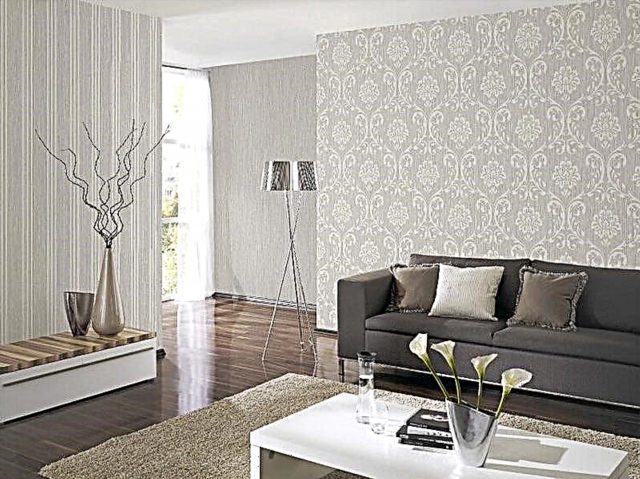
The palette can be arbitrary. Wallpaper in the interior of the living room may be similar in texture and color, but may completely differ from each other. It is desirable that they have the same width in order to maintain consistency.
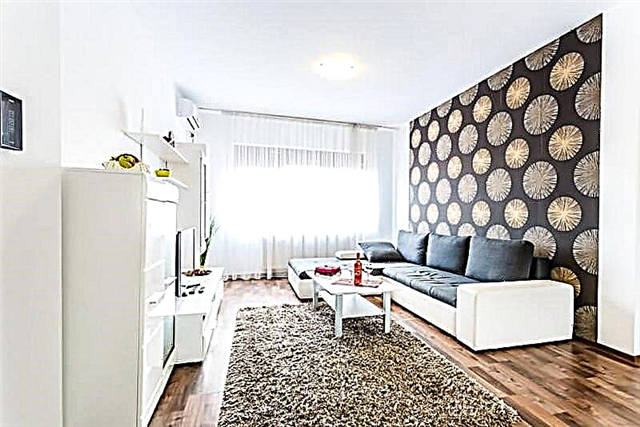
There can be difficulties with joining horizontal stripes, so molding is suitable here. Usually, the connection border is at a height of 100 centimeters, to obtain a visual increase in the room. Orient the border with respect to the floor so that bumps do not rush into the face.
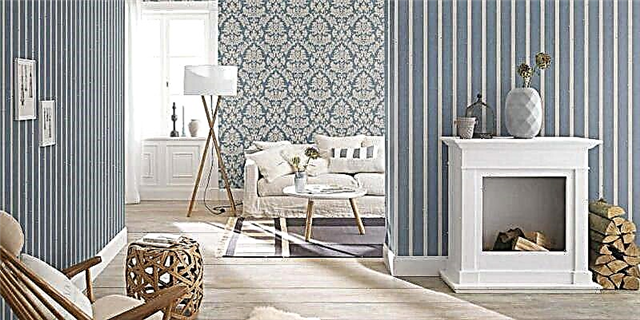
Vertical combination
The combination of wallpaper in the living room vertically involves a joint in vertical stripes. When using a small picture, it is possible to achieve a visual increase in height. The combination of texture can be different, there are no requirements for the selection of a specific picture. But, if the wallpaper has a different texture and height - it is better to use a connecting molding or barrier.
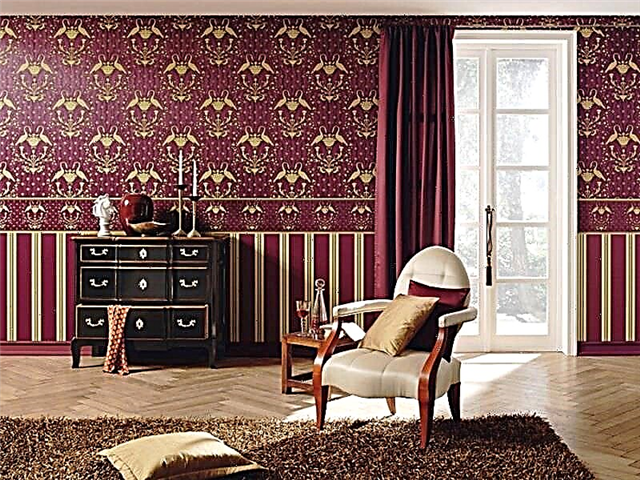
Often, designers use an alternation of different textures from calm and plain to aggressive, dynamic.
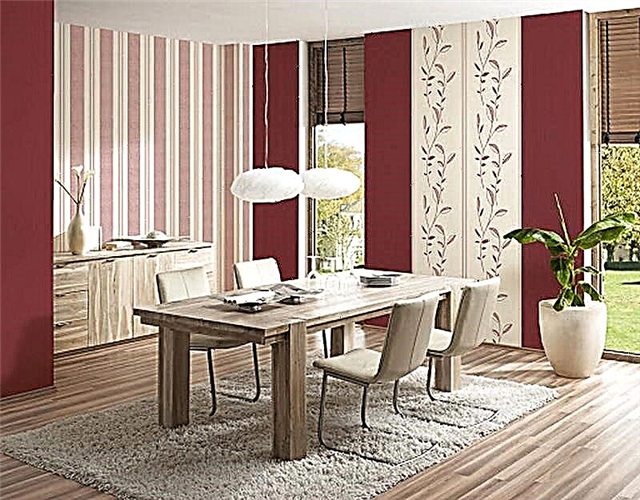
Accent wall
Creating an emphasis on one wall allows you to make a contrast between the main wall and the peripheral design.
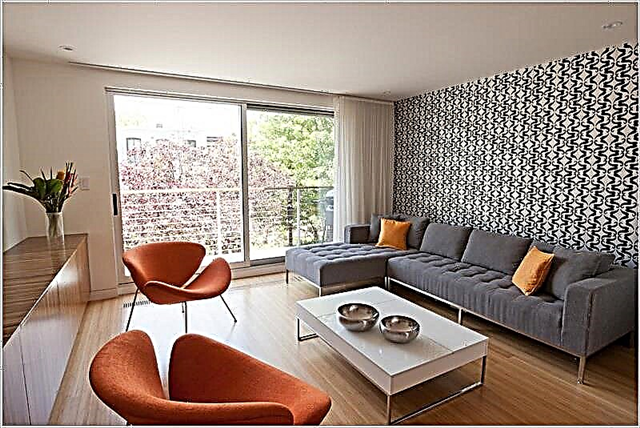
It is important to follow a few rules:
- The emphasis should fall on only one wall, maximum 2. If you decorate more walls, the emphasis will disappear and the essence of the combination of wallpaper will disappear.
- Colors do not have to be vibrant and defiant. Allowed neutral tones, pastel.
- You can highlight a wall with a combination of cool and warm colors.
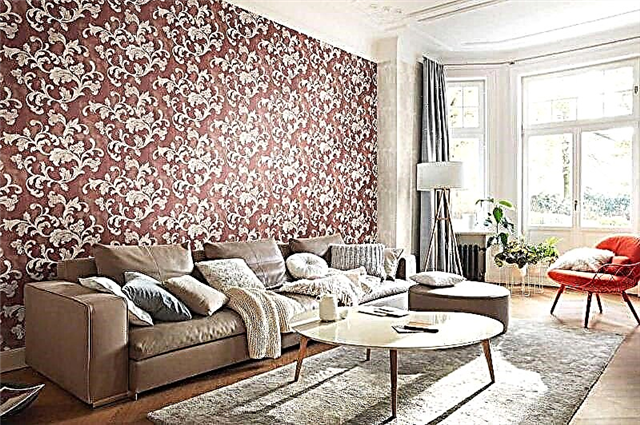
Emphasis sets focus on a specific site. It should strongly contrast in comparison with other parts of the apartment. It is important that the rest of the room is decorated more faded, without colors, so as not to interrupt the impression.

Plain and Plain
The combination of plain canvases is a common technique for zoning a room. The use of wallpaper similar in characterization allows you to layout a room, while maintaining a unified picture of the design. They are called companions.
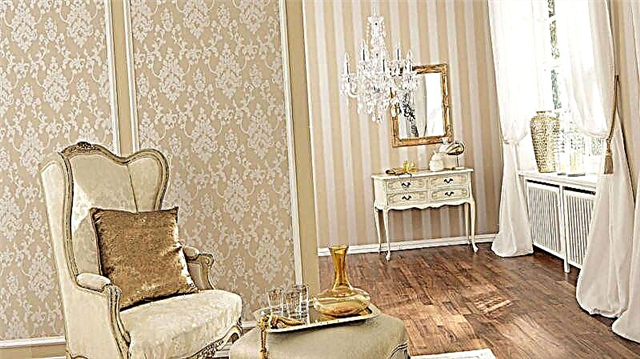
The art of combining is the union of soft, simple canvases with more dynamic bright ones. You can use different textures, shapes, patterns. It is only important to observe the background. You can combine them according to different schemes, including orienting horizontally and vertically.
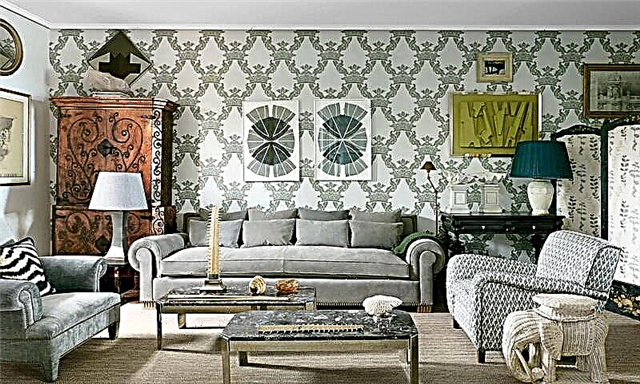
Wallpaper companions with photo examples for the hall can be seen below.
Pattern or ornament and plain options.
Combined wallpaper for the hall of this type is often found in ready-made collections, where one part implies a solid plain background, and the second - an additional ornament on it. If the background is different, the correct docking will not work.

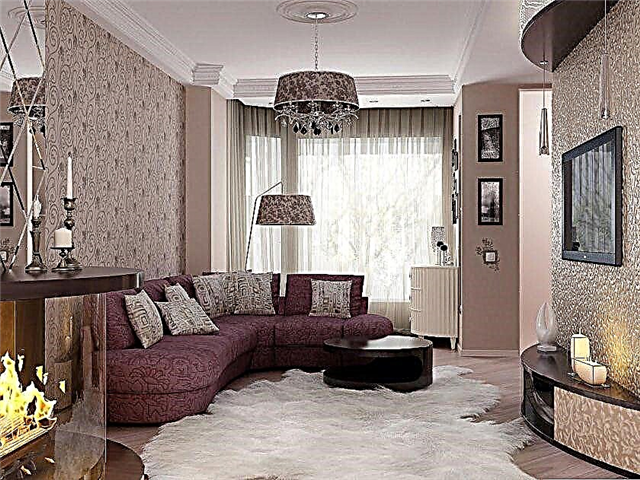
Choosing a pair yourself, you should rely on the following rules:
- A large picture should be chosen only if the room has a large area. In a small room, a wide ornament will look too piled up.
- Wallpaper with a texture, preferably, should have a contrasting pattern that will be clearly expressed in the background.
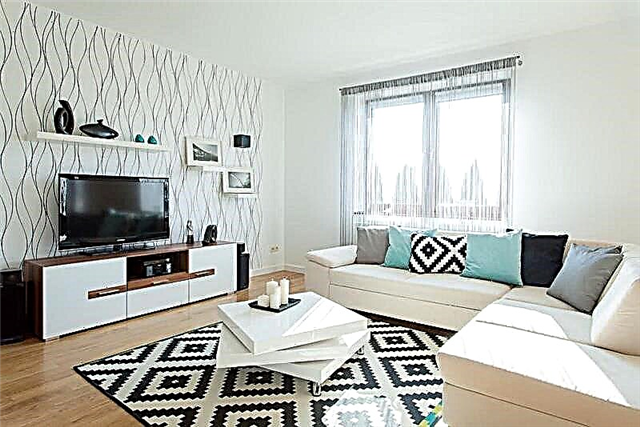
Pattern and pattern
Modern wallpaper for the living room in union can both have patterns. They can harmoniously coexist in one design if they have a common motive. There should be no complementary (negative) colors, as this will lead to a serious design conflict.
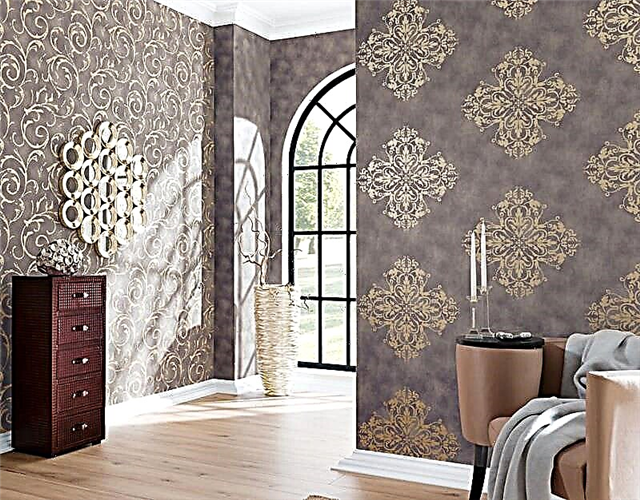
Frequently used technique with horizontal orientation. Dark canvases are located in the lower part or are overloaded with ornaments. Light wallpapers are glued on top. A light border is placed between them.
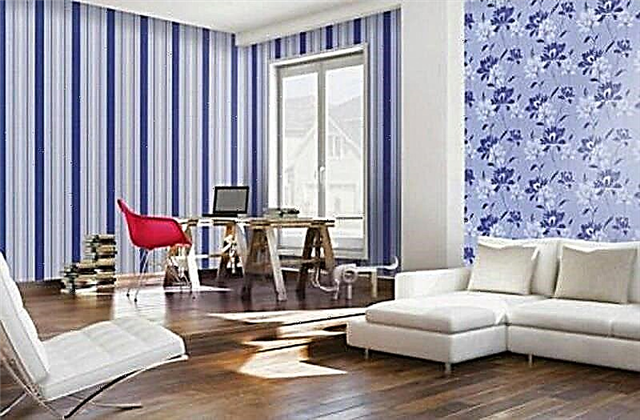
Wallpaper can be used for zoning, if you want to allocate space for rest and work. For greater crushing, moldings are installed.
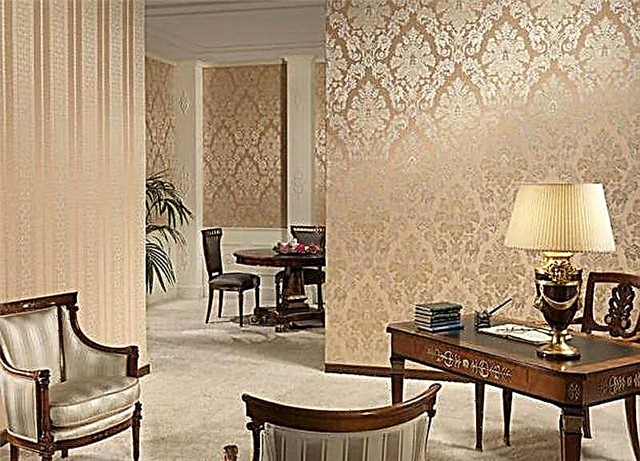
The combination of wallpaper in two colors of the photo in the hall can be seen below.
Combining photo wallpaper with wallpaper
Wall murals can be used in design, but only in combination with a plain canvas. Dynamics should stand out against the background of uniformity, competently creating an emphasis.
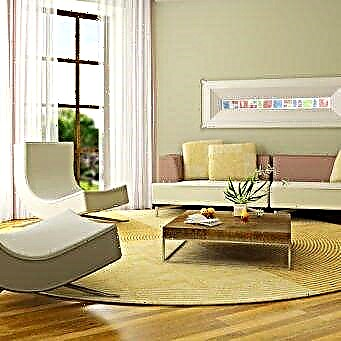
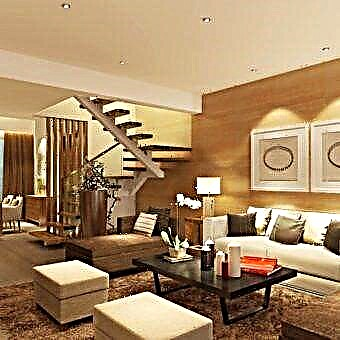

You just need to adhere to a few rules:
- Choose a picture that matches the idea of the overall design of the room.
- The size of the photo wallpaper should correspond to the height of the wall. Frames can be placed on the sides.
- Maintain overall harmony between the background and the photo wallpaper.
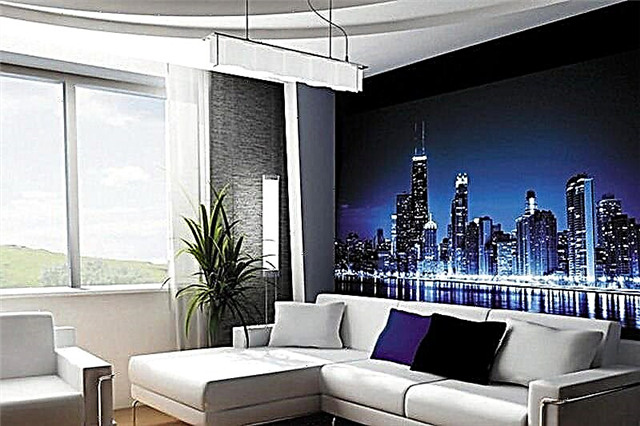
The standard view of skyscrapers goes well with gray and white wallpapers. Greens, flowers and trees are suitable for rooms saturated with light with a colorful background.
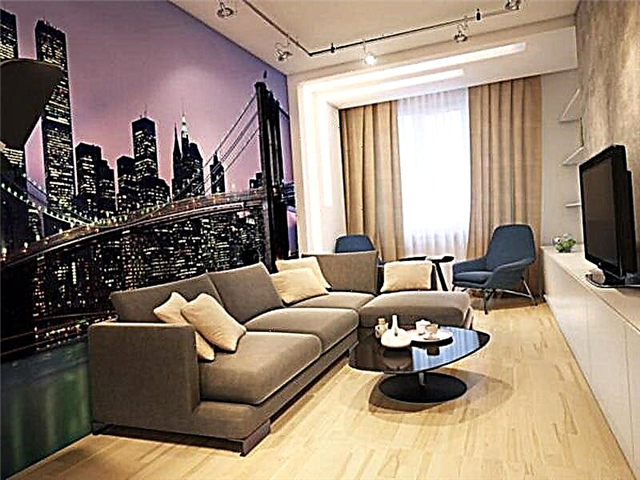
Patchwork technique
The combination of wallpaper in the living room using patchwork technique. With it, small fragments are cut out, which are glued butt or lap to the background. With the help of rags, it is possible to highlight individual fragments of the hall, such as a TV, mirrors, shelves. Often this is the headboard.
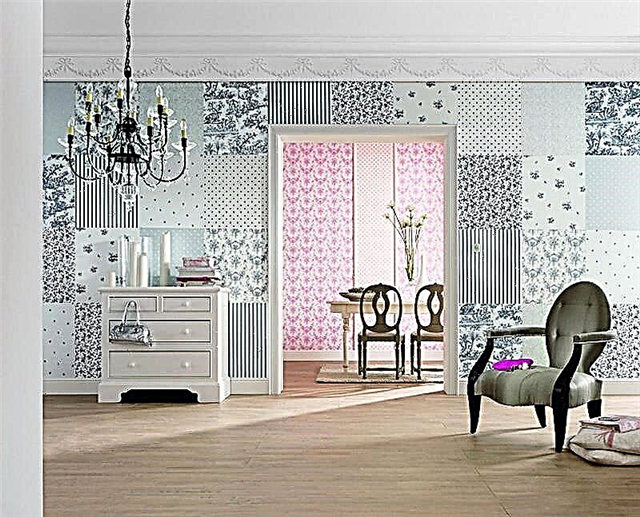
To reinforce the impression, you can frame large flaps with molding. It is possible to create a neat applique, to make fragments round or triangular. The design may correlate monophonic and colorful elements, diluting the overall uniformity.
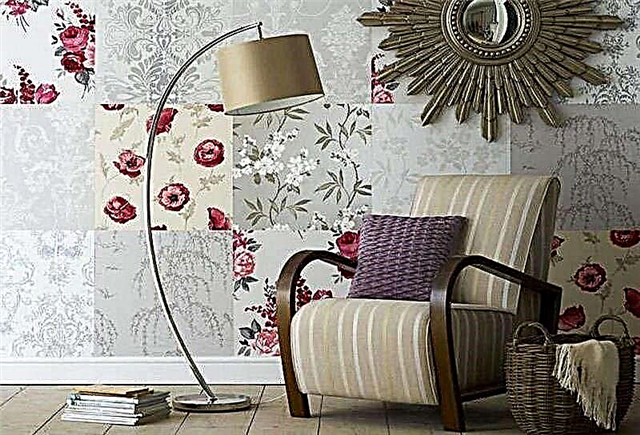
Niche highlighting
Many apartments have engineering niches that were not closed during the construction phase. Often when you try to close them, bumps are formed due to shrinkage of the plaster. But you can equip them in the decor.
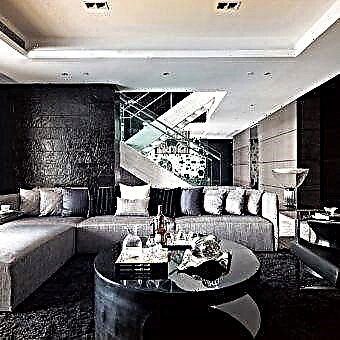
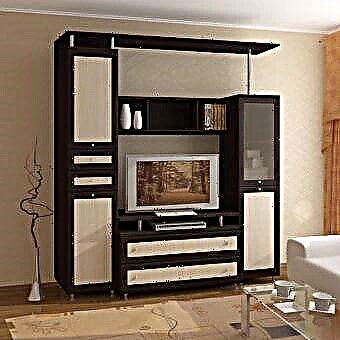
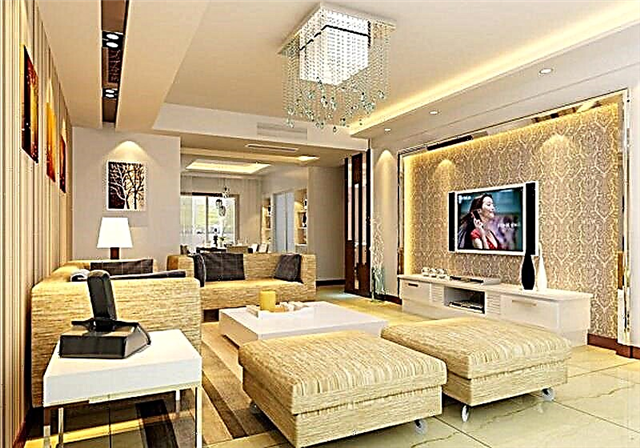
The combination of wallpaper in the living room can make the room more expressive. If you make the main tone uniform, a niche can be distinguished using textured canvases.
You can visually alienate a niche if you use warm light wallpaper in the living room against the background, and lay a groove in a cool color. To emphasize the tone, LED strip or artistic lights are allowed.

Combination of wallpapers with different textures
To emphasize the canvas with an interesting texture, they can be distinguished against a homogeneous wall. Beautiful relief, colorful texture and bright color must be balanced by simplicity, ease.
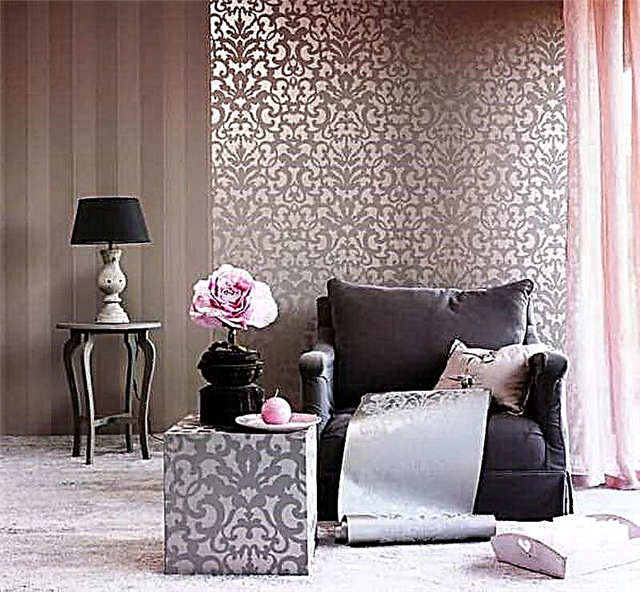
Another popular design technology involves the combination of two paintings, similar in shape and width. The similar nature of the color will create zoning, consistency and rigor. It is not customary to highlight seams with moldings, so it is better to find wallpapers with the same height of the picture. Place the convergence should be placed in the corner so that there are no shifts.
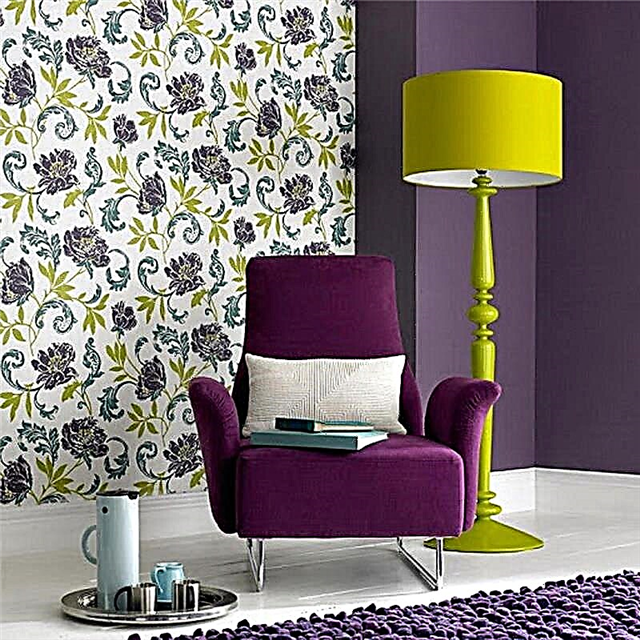
Combining brick wallpaper
The loft does not lose popularity, but repairs in this style are expensive and not always appropriate. A brick wall increases the load on the foundation and sometimes this can be prohibited by SNiP requirements. In a small apartment, it is more appropriate to replace natural brick with simulated wallpaper in the living room.
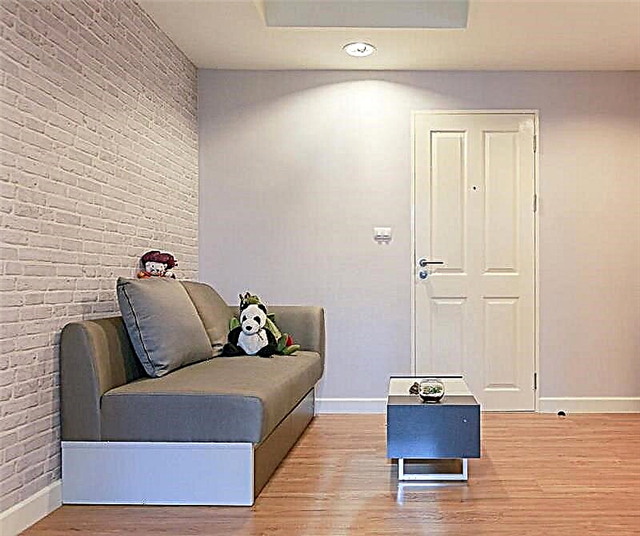
A room with light wallpaper can be diluted with a brick pattern. On sale there are even textured fabrics made of foamed polyvinyl chloride or acrylic. There are imitations of silicate, ceramic masonry, fireclay.
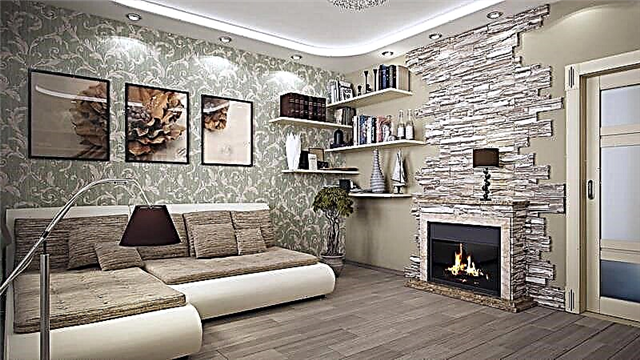
No transition
Ordinary paper wallpaper or with the same thickness can not be combined with anything. Just stick them back to back.
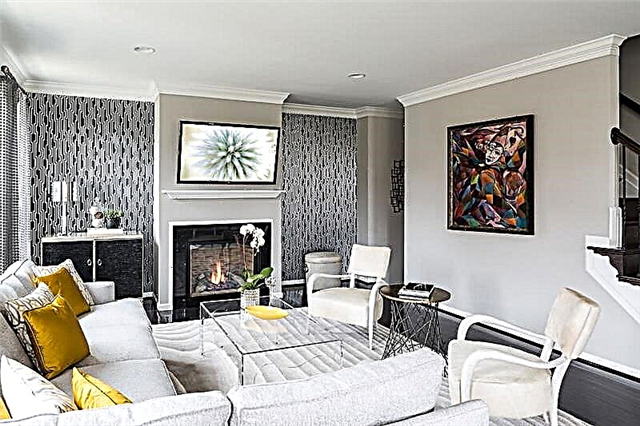
To do this, follow the instructions:
- The edges of the wallpaper at the junction are not smeared with glue. This is necessary so that after fitting they can correctly dock. It is important to pre-calculate the desired indent. As a rule, it is 2 centimeters for an even seam.
- With a sharp clerical knife, you need to draw a single line, cutting off two canvases at once. The line may be flat or wavy. If a straight cut is expected, you can use a long ruler or level. For curve cutting, a pattern may be required.
- The remaining edges must be glued.
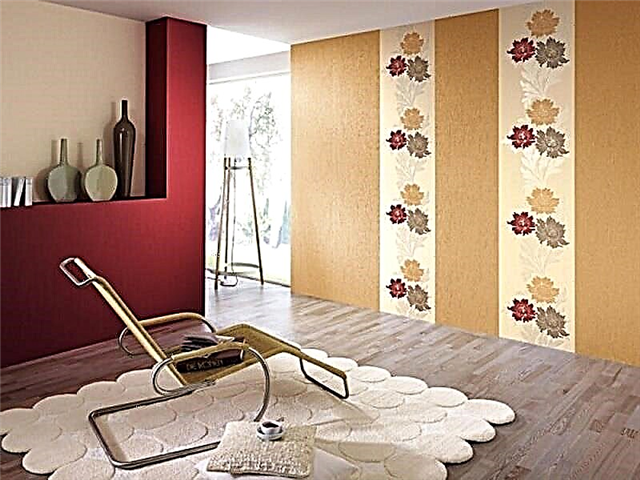
You can include the joint in the corner of the room so that each wall stands out with a different canvas. So the seam will be invisible and you can not hide it with overlays.
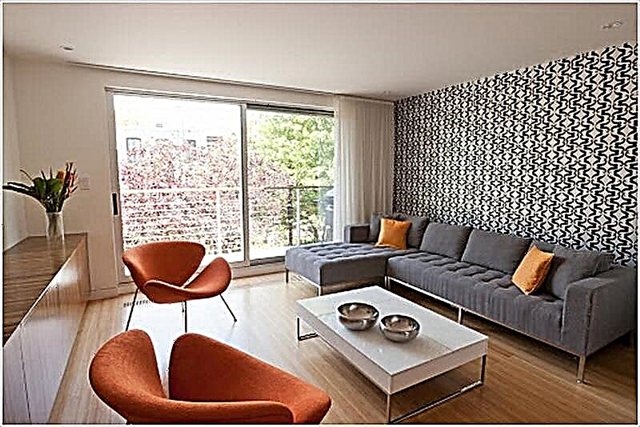
Moldings
Common docking technology. The combination of wallpaper in the living room with the help of such a side allows you to make the design a single, without visible joints. Earlier moldings were used exclusively from wood and metals. Nowadays, polyurethane or polystyrene sides are often used, which are inexpensive and can be styled with other materials.
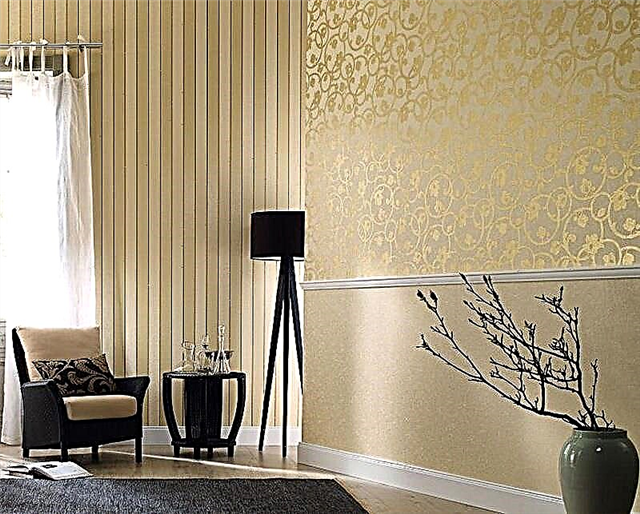
For fixing, ordinary glue is used, such as “Dragon” and “Titanium”. The volume of the border allows you to hide any seams. Combined wallpaper for the hall with moldings is characteristic of classicism and derived styles, country, scandi.
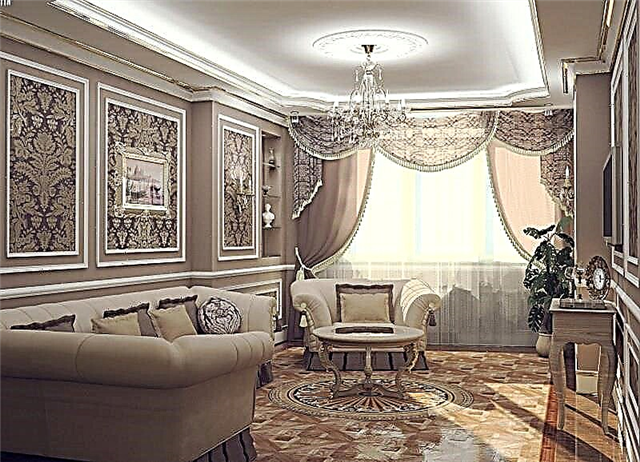
The side is selected in accordance with the color of the wallpaper for the living room. It should not contrast with the overall design. Molding is used in the following combinations:
- Horizontal and vertical docking,
- Patchwork technique,
- When applying photo wallpaper.
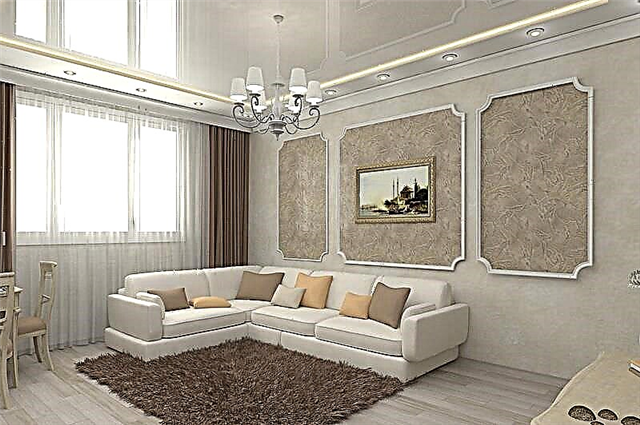
The molding can be painted with acrylics.
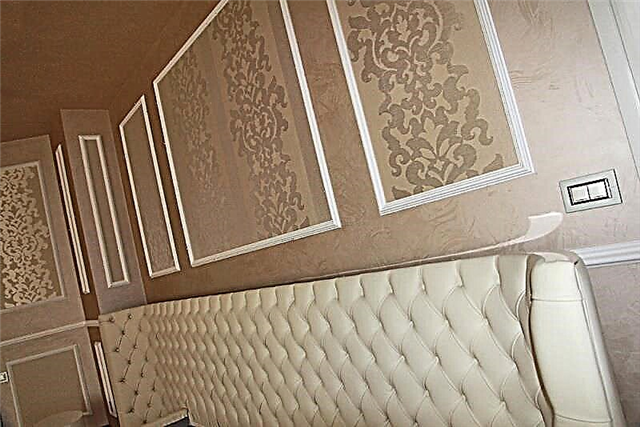
Wallpaper border
Before combining wallpaper with each other along a horizontal junction with a border, you should find a suitable border. Most often, the overlay corresponds to the tone of the wallpaper from the bottom. They can be selected in the catalog.
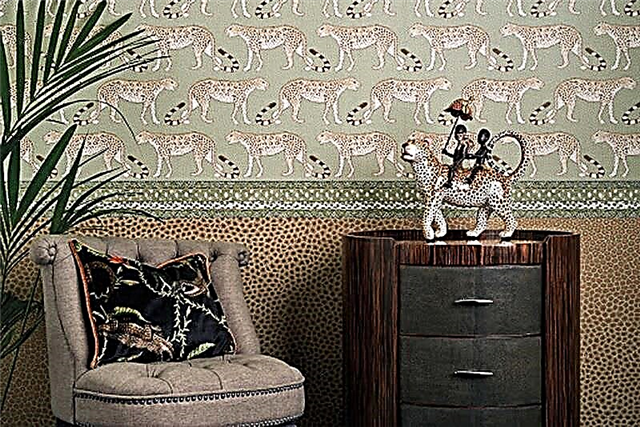
The border is often made on a paper basis. They fade in the sun, can come off due to drying out. Therefore, it is preferable to choose acrylic or vinyl edging. An alternative is textile framing, which is characterized by strength and resistance to ultraviolet. But, you can’t use it in the kitchen, as the fabric absorbs odors and fats.
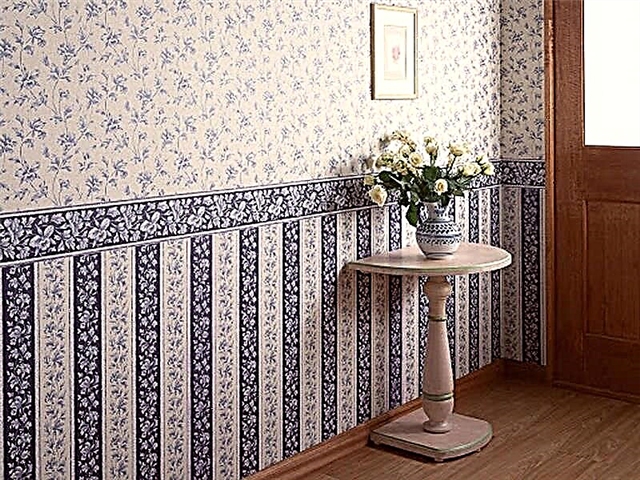
Layout Errors
Often the following errors occur:
- Behind the furniture walls, wallpaper with a texture is glued. This is very distracting, so even a beautiful layout will be invisible.
- Dark wallpaper in a small room. Small rooms should be decorated in bright colors so that there is more visual space.
- In a narrow room, do not glue a wallpaper with a dense pattern on a long wall.
- The horizontal stripes in the low-ceilinged hall make the room even lower.
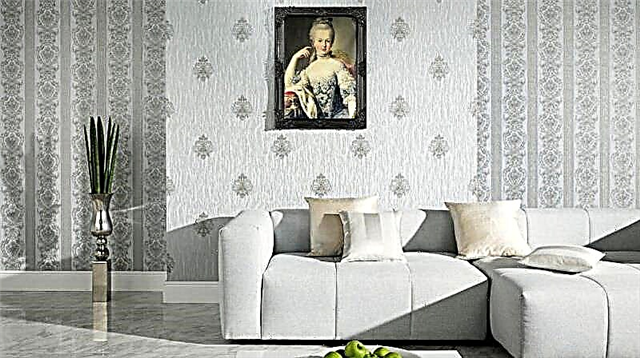
Tips & Tricks
When accenting wallpaper with one of the walls, it is necessary to choose the “right one”. Usually this is the wall that attracts the eye when entering the room. It can also be located in the background of one of the functional areas or behind a furniture group: a dining room, a desk, upholstered furniture, which, thanks to a suitable background, can only win.
The principle of choosing a wall was absolutely unmistakable in Soviet times. The main attraction - the Uzbek carpet - always hung where needed, was visible from any point of view.
The boundaries of the accent wall are also determined in advance. And this is necessarily the whole wall, and not some part of it behind the sofa (what will happen if the sofa suddenly has to be moved?). This is not a few walls, sometimes decorated with companions, but giving the impression that the room was pasted over with the remnants of a previous renovation.
The following simple rules must be considered:
- Accent wallpaper is glued to the view wall. The desired minimum distance to it is 3-4 m. The Khrushchevskaya kitchen, for example, is not suitable for such a design.
- Combining two types of wallpaper with an active pattern is contraindicated, even if they are partners.
- Photowall-paper or any other with a dynamic print are in the best way combined with monophonic.
- In order not to have to puzzle over the design of joints, accent wallpaper takes place from one corner to another or to a niche, ledge.
- The basis for creating any combination should be a certain idea, it is necessary to fix the eyes of those present to something specifically.
Combination errors
All the mistakes of designers can be reduced to the following:
- Lack of purpose in combination, action on a whim.
- The choice of the “wrong” wall.
- Placement of wallpaper in pieces, with borders not in the corners. The exception is inserts with trim joints, moldings or when the wall is divided into two parts horizontally.
- The layout of the duet without taking into account the features of the room.
In order not to spoil the picture of fresh repair, you can’t
- have large furniture near the wall with large patterns, the optimal background in this case is solid,
- decorate a small room with dark colors, light shades are more harmonious, preferably no more than three,
- decorate a large wall in a narrow room with patterns, they will further narrow the space,
- stick the wallpaper in a horizontal strip at low ceilings, the ceiling will press even harder
- vertical stripes will make a narrow room with high ceilings even more awkward.
How to combine wallpaper by color?
Scientists have proven that colors affect not only mood but also health. For a comfortable life, design colors are chosen for a reason. They are combined according to certain rules. Not all shades look harmoniously next to each other. Sometimes even unexpected combinations are fascinating, in other cases you want to look away as soon as possible. Combinations for the interior are selected according to the same principle by which they collect a bouquet or toilet items.
Given the furniture, decor, the room is usually present three to four to seven colors. There are not many of them, they only serve for a change, bring accents. The main two are the colors of wallpaper, floor, furniture elements. Choosing a color, first of all pay attention to the size of the room.
The color scheme of the walls determines the overall decor of the whole room. Some color elements from the wallpaper pair are necessarily duplicated in the interior: repeated in furniture upholstery, echoes with doors or floor, ceiling.
Shades of the same color.
The combination in one room of wallpaper of the same color is considered classic. Walls can be patterned, regular, chaotic, barely pronounced. For a small room, two types of wallpaper with the same pattern, somewhat different in shade - the combination is most acceptable.
Monochromatic combinations can differ only in saturation. More juicy shades highlight the priority zone.
Any room will look organic if the decoration of the same color is combined there, but with a different texture. Textured elements look much more spectacular if they are made in the same color. Shiny surfaces look unusual, combined with matte. In addition, small rooms with shiny walls will visually appear more spacious.
Contrast colors
The correct combination in the interior of several bright paintings that you liked is a delicate matter. Those who have no experience in this business are embarking on a slippery slope. It is also worth considering the price of various coatings. You can quickly ruin the look of expensive silk-screen printing by placing budget paper nearby.
The contrast method is most often designed in living rooms or bedrooms. One of the colors should be active, and the second neutral.
Modern design ideas are based on style, the rejection of everyday life. Special techniques consist in combining warm and cold colors, the use of catchy colors. Possible options are:
- simple when harmonious, unidirectional color schemes are combined,
- moderate, when the tones of wallpaper do not combine with each other, but have a common space
- difficult if the interior is decorated with more than three colors of different saturation.
Nearby Shades of the Color Circle
To maintain the integrity of the interior, not to miss the choice of colors, use a special cheat sheet called the color wheel. With it, you can pick up similar colors, simply by taking 2-3 or 5 located next to it.
Advanced designers usually do not use 2, but 3-4 shades, which are diluted with universal black, white or gray. Since they are absent in nature, they are not in the diagram. In the design of the premises act not only as additional, but also as the main ones.
The combination of colors (table)
It’s interesting to work independently on the selection of suitable colors. But those without experience tend to make mistakes. There are tables that greatly simplify the process. The main thing is to know how to use them.
This or a similar scheme is used, remembering that the first color must be used as the main one. The two following him can act as additional ones, those that follow are accented.
There are tables where contrasting combinations are presented or compiled according to the complementary principle. From the proposed options, you just need to choose the combination that you like best.
Wallpaper Border
Paper framing is not a problem. It can be selected for wallpaper at the place of purchase according to the catalog or cut out fragments from the wallpaper strip itself. The advantage of such a finish is cheapness, ease of gluing and removing. The disadvantage is exposure to ultraviolet, mechanical damage.
You can choose vinyl and acrylic edging, they are approximately similar in quality. Textile is denser and more durable thanks to a two-layer structure consisting of paper and fabric.
It is not worth hoping for the quality of the self-adhesive edging, it has the property of spontaneously falling off over time. It is advisable to glue it, additionally smearing with glue initially.
Combination Methods
Combination is always creative, creativity. Some of his techniques are very bold, especially if the stylistic solution involves the use of vivid contrasts, unconventional combinations. Therefore, you need to choose the decor carefully. When buying materials, it is necessary to consider such key factors:
- degree of lighting
- room size
- conceived style
- shades and textures should not "swear" among themselves.
Choosing a texture is usually easier than deciding on the right color scheme. If all types of decoration in the apartment can be combined into one harmonious whole, they get a satisfactory result:
- the room seems to be adding size
- irregular shapes, bumps in the walls are hidden,
- the interior is filled with light
- separate zones appear
- highlighting the winning features of the layout, style.
Horizontal Combination
The method is most successful if you glue the room with wallpaper of various types, for example, the upper part is paper, and the lower one is embossed with vinyl or non-woven. Walls will receive additional protection; partial repairs will be easier and cheaper.
Horizontal stripes can be distributed over the entire height, alternating in color, pattern. If you decide to stick only two types of wallpaper, then the parts should be in a proportion of 2: 1.
The separation height can be changed, focusing on the levels of furniture, windowsill, given the layout, size of the room.
Joints oriented horizontally are much more difficult to mask, so it is appropriate to use moldings, all kinds of borders, baguettes. Traditionally, the border is made at a height of not more than a meter, but only if the height of the walls is small. With unusually high ceilings, the joint is placed at a height of 1.5-2 m. This distance is oriented relative to the floor, not the ceiling, otherwise the slightest roughness will be striking.
Room Zoning
Sometimes one room is divided into zones, each of which performs its own function. Along with other methods, the method is used when a part of the space is separated from the rest using wallpaper with patterns or other color shades.
The decisions are quite unusual. Separation is achieved not only by color, but also by texture. One of the options is to separate, for example, the kitchen from the dining room, pasting it with structural wallpaper for painting. Some areas are decorated with floral patterns, and the next with a checkered print of the same gamut. The main thing will not be wrong with the arrangement of furniture.
Zoning with the help of wallpaper will help determine the boundaries of the zone without effort and unnecessary expenses: neither drywall partitions nor heavy curtains will be required.
The combination of liquid wallpaper
At first glance, liquid wallpapers are like decorative plaster, suitable for any room, go well with non-woven.
The most acceptable combinations are those achieved by playing with color. Liquid wallpaper is easy to combine with each other, with other materials, supplement with drawings, original patterns. Panels are created from them, and if “kneaded” denser, then decorative volumetric elements, for example, imitation of stucco molding.
Focus point
A certain visual anchor, attracting the attention of those who entered the room, a beautiful detail, which is the center of the interior, acts as a focal point. It can be natural, such as a niche, a fireplace or a large window with a beautiful view.
If there are no such architectural details or an amazing panorama, then the picture, sculpture, furniture group, which the designer “appoints” as the main ones, can act as a focal point. Select them will help the correct lighting, background wallpaper. The latter are combined in such a way that part of the wall differs in hue from the main one and is monophonic or stands out with an unusual pattern. The effect can be complemented by framing, decorative ornaments.
Decorative ornaments
To change the interior without starting a grandiose repair, it is enough to use decorative stickers that are ready or made by your own hands. They are easily glued, now there are such that they are cleaned without consequences.
The subjects and style of such decor are very diverse, suitable for any stylistic direction: loft, avant-garde. It can be small stickers or large silhouette images of people, animals. With their help, they enliven the atmosphere of the children's room, place accents in the living room, combine disparate pieces of furniture, appliances in the kitchen, add positive in the bedroom.
The combination of wallpaper combinations in the rooms
Not everyone loves experiments, they decide to move away from the traditional pasting of each room with wallpaper of the same color. In order for fresh repairs to look harmonious, you must first study a large number of recommendations from knowledgeable designers, study examples with photos, and develop an idea that takes into account the functional features of each room.
Living room
The room where visitors are received is often called the hall. They welcome guests, spend evening gatherings with tea parties, meet colleagues, important guests. Therefore, it should not only be comfortable for home, but also maintain the image of the owners as successful people, not lacking in taste. You should not save on the quality of decoration of this room. Here the classics are applicable, a combination of silk-screen printing, glass wallpaper, the use of non-woven, vinyl wallpaper.
The hall most often carries the functions of a living room and dining room, sometimes a bedroom. Some of the corners may be a work area or a library. Wallpaper partners will help divide the space into zones. The main violin is played by the size of the room. If the living room is small, it is better to resort to light shades. On vast expanses, imagination can not be limited, experimenting with textures, colors.
The recreation area is usually made lighter, decorating with plain canvases or with a small pattern. The place where upholstered furniture, a fireplace group is located, the plasma will win in the design with more saturated colors, beautiful drawings.
Bedroom
Since the zone is intimate, they proceed only from their own preferences, having previously agreed on the basic principles with a partner.
The main role of the room is to help relax, provide a good rest. Bright contrasts and catchy patterns are of little relevance here. It is better to decorate the walls with calm colors: beige and white, who loves the bedroom darker - in various shades of brown, blue.
The texture is better to choose smooth. In addition to traditional, fashionable fabric wallpapers look good in the bedroom. It is desirable that they have something in common with textiles: curtains, bedspreads. If you combine them with other types, then the joints will have to be beaten with moldings or rails due to the mismatch of the thickness of the materials.
Combining different types of wallpaper, the headboard is pasted over with textured, darker materials, photo wallpaper, emphasize it. In order to isolate the sleeping place, the accent strip is continued along the ceiling.
Kitchen
In the kitchen, solving the problem of the right combination of colors is not so simple. There is a lot of furniture, one of the walls is often occupied by tiles, there is very little space for wallpaper. In addition, they need to be combined not only with all the furniture, but also with the working area, refrigerator, other household appliances.
In order not to oversaturate the kitchen room with paints, the wallpaper duo must be made neutral, without large patterns. The large kitchen-dining room is decorated more vividly, but here, nevertheless, pastel shades, light tones will look more harmonious, if the drawings are small.
Bathroom
The microclimate of the room does not favor gluing it with wallpaper. Other coatings that resist moisture well are more relevant here. But if the bathroom is spacious, well ventilated, then it is quite possible to design it partially with wallpaper, especially since the canvases are easy to change if it suddenly turns out that they are slightly peeled off.
Apply better moisture resistant, washable materials. Liquid wallpapers are also suitable, which after hardening are covered with acrylic varnish. Apply options with vinyl wallpaper. They are expensive, but their level of fixation can be increased with special glue. Self-adhesive, not afraid of moisture, cullet is also a good solution. All of them are well combined with each other, with 3D, photo wallpaper. The latter is better not to place directly at the shower. This area is decorated with tiles, and the wallpaper is pasted at the washing machine, sink, in the toilet area, where splashes do not reach. The main thing is that the combination of color, texture does not cause complaints.
Children
In this room you can let the colors run amok. But even here it is better to adhere to the general rule and not combine more than 2-3 colors. Of these, only 2 can be saturated.
For the smallest, neutral shades are chosen. It is not necessary for girls to adhere to pink, and boys to blue. You can choose any colors. Among the most popular for children are green and yellow, peach and apricot, natural colors of wood, green tea, olive, lilac.
The nursery, like the bedroom, needs a comfortable environment. Gloomy shades are inappropriate here, bright and cheerful, but not distracting from classes, are welcome. A room for two children can be divided into different areas by wallpaper into individual areas, the play area can be highlighted with accented paintings, the design can be diversified with decorative stickers in the form of animal silhouettes, geometric shapes, exotic plants, rockets and ships.
Patchwork technique is used so that the colors of the flaps correspond to the tonality of the floor. A wall with photo murals, stylized drawings will look good.
Hallway and corridor
This room is rarely spacious. In most cases, it is narrow and long. Do not make it very dark, except to make the lower part of the walls in darker tones, if the border between the partners runs across.
The joint between the ceiling and the wall is often made out with a special side, where the backlight is masked. This technique helps to "raise" the stretch ceiling, revive the interior with highlights from it. A narrow and narrow corridor will seem much more spacious with a competent layout of wallpapers, thoughtful lighting.
In the room not cluttered with furniture, wallpaper inserts, moldings and borders, harmonizing with the mirror frame, medium-sized geometric and floral patterns look beautiful.
The area closest to the front door is preferably glued with washable wallpaper or wear-resistant glass. Decorate the corridor and make it more lively will help posters, photographs, all kinds of stickers.
Interior Style Tips
The antique style, replete with columns, arches, elements of marble, stucco, can be embodied without spending money on golden murals.Wallpaper imitating wall painting is combined with plain pastel colors. On the walls place photowall-paper with natural, historical plots. The style is supported by moldings, stucco made of polyurethane.
The splendor of Rococo and Baroque will be emphasized by silk-screen printing, wallpaper on a fabric basis. Wall mural paper will help to imitate woven trellis. Pompous moldings will go instead of stucco molding.
Classic colors from dairy to burgundy, geometric prints, panels, combining horizontal wallpapers are perfectly feasible. At the joints, wooden slats are placed, the bottom of the wall is sometimes decorated with carved wood or plastic.
For the Victorian style, the best print on the wallpaper is stripes and a cage, floral motifs.
The Japanese surroundings will be supported by natural concise colors, thematic photo wallpapers.
The interpenetration of Europe and China is expressed in grace, a mixture of familiar furniture with paper panels. Oriental style - this is a wallpaper with unusual birds, flowers.
The Turkish style will fill the bedroom with turquoise and azure, dictating to design the headboard not in a square, but in the form of a dome, an arch.
Village country and Provence will require simple textures on the walls, matte paintings with a small scattering of flowers. It is advisable to combine the coloring of the wallpaper with curtains.
Alpine chalets are characterized by simple materials, a discreet cork or bamboo base in combination with imitation brickwork.
Modern trends take something from the classic interior, but there are also rough textures for metal or masonry. Photowall-paper with the image of mechanisms, gears are applied.
Combination with other finishing materials
From the offers that are on the market, it's easy to get confused. Whitewashing, water-based paint is now used as a budget-proven option for years. Those who want a more modern design, the interior space is finished with wood and stone, decorative plaster, PVC panels and eco-leather are used. On sale there is a special wall linoleum, which can scare away only the name. They have little in common with the well-known flooring. All materials are good in their own way, have a special texture, certain decorative properties. But not everyone compares with wallpaper in price, ease of installation. In addition, a room completely "wired" with stone or tile is unlikely to amaze with comfort. The best option is to combine.
Wallpaper and panels
The decorative coating, which is now made from a wide variety of materials, goes well with wallpaper. This tandem always looks presentable, expensive. The material of the panels, depending on the style of the room, is used very different: PVC, gypsum, textiles, wood shavings, sometimes marble and metal. Someone is managing to beat parquet and laminate on the walls. Why not?
Brick Combination
Many now fashionable styles (Gothic, loft or Scandinavian) are very kind to unplastered walls. So that the brutality in the room does not go off scale, “naked” leave one of the walls, or only part of it. The rest of the perimeter is finished with wallpaper suitable for style and decor, colored or plain.
Tile
The most popular places of residence, a kitchen or a bathroom, can not do without finishing with the equally popular material - tiles. Tile plus wallpaper is the most versatile option that allows you to realize design fantasies. In this pair you can beat everything: the shape of the tile and the pattern of the wallpaper, their texture and color, the way of laying tiles and gluing the wallpaper.
The combination is built on contrast or combined by a common color, elements. Other materials can be connected to the combination: glass panels, decorative plaster.
Wallpaper selection
The most important thing: do not buy cheap wallpapers with drawings and patterns. This is the worst thing you can do - the print quality on them is always terrible and this can be seen. If the budget is very limited - take plain wallpaper without drawings and patterns, they are quite normal. Just compare expensive and cheap wallpapers, and if it is visible even in the photo, imagine how it looks live.
In this material we will talk about wallpapers for modern styles, because we made out the classic wallpapers to the bone here: Combination of wallpaper in the bedroom.
When choosing a wallpaper, first of all, pay attention to their surface - smooth or textured. In 2019, the variety of wallpapers in terms of appearance and price is simply huge. But we will only talk about options up to $ 20 / meter, because there’s simply no more reason to pay for wallpaper, because for that money one could already take a closer look at decorative plaster:
Wallpaper is objectively worse than decorative plaster and in one niche they cannot compete. Therefore, we must understand why we choose the wallpaper, and there are 2 reasons:
- This is the most budget finish. Wallpapers are inexpensive, gluing them simply and cheaply, under the wallpaper does not need perfect wall preparation.
- Correct patterns, drawings, complex color schemes can be realized only in this way (therefore wallpapers are used even in the kitchen).
Here are a few photos of examples where such an effect could not be obtained except for wallpaper:
Hence the conclusion: it makes sense to choose plain-colored wallpapers and wallpapers with interesting geometric and color patterns. It is about their combination in the interior that we will talk about. We repeat, we are only talking about modern styles, in classics for wallpaper expanse, about classic wallpapers read in the material about the bedroom.
Combination of wallpapers in 1 room
Theoretically, there are many ways to combine wallpaper in a room:
- Division of a room horizontally. Option for classic styles or american style. The lower and upper halves of the wall are glued with different wallpapers, between them a stucco border or a special dividing strip of wallpaper. Usually some of the stripes are wallpaper.
- Inserts from the wallpaper. Niches are decorated with wallpaper or panels are made into frames. Used only in classic styles.
- Wallpaper flaps. Creative and time-consuming decor. A lot of options, but the method is highly dependent on your sense of taste and measure, and therefore risky.
- Accent wall. All walls except one (or even part of one) are pasted over with discreet background wallpaper, and one wall is distinguished by others in contrast.
In practice, we will talk only about the last version of the combination. The first three are closed on a small number of styles (the first 2) or too complex (3rd).
Immediately divide all the wallpapers into 2 main types: accent and background. Accent - wallpapers of bright colors, with aggressive contrasting patterns, geometric wallpapers. Background - plain wallpaper without patterns and drawings, calm pastel colors. Accents are used on one, at most two walls, and this is a strict rule.
Never use accent wallpaper on more than two walls. Better on one.
The rule of choosing an accent wall is simple - the less the wall is loaded, the better. With an equal low load, we select a wall on the axis of symmetry of the room. By congestion is meant everything that breaks the plane: windows, doors, shelves, paintings, appliances, furniture. Accordingly, when the wall is overloaded - choose a simple wallpaper:
For living rooms, the wall behind the sofa is most often the accent, in second place is the wall behind the TV. On two other walls, a plane with a radiator and a door break the plane. If the walls behind the sofa and TV are small, this is also an argument against using accent wallpapers.
If all the walls are loaded, then you don’t need an accent at all. Design is not only done. Using only background calm wallpapers is quite normal. Wall murals and other interesting options are especially sensitive to the absence of other objects on the wall:
Combination Rules to Know About
Today, wall-papering with a solid color few people become obsolete, because it looks boring and banal. After all, when you enter the room, the walls are involuntarily immediately drawn attention. Therefore, they need to be given special significance.
In order not to violate the integrity of harmony, a few simple rules must be observed when covering the walls with canvases.
Recommendations for quality wallpapering
- Using smooth wall surfaces.
- Apply strips on each wall of the same thickness.
- Using the same wallpaper in structure: vinyl or paper samples.
- A combination of products of the same width.
- The use in the same room no more than two colors, if this is not provided for by the design plan.
- The combination of bright colors with neutral shades.
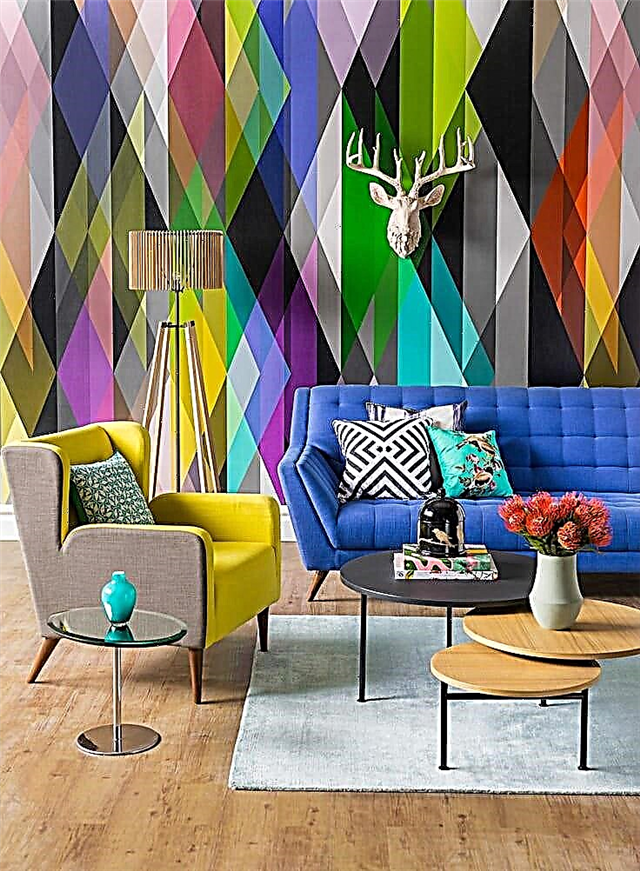
Bright wallpaper in the style of pop art.
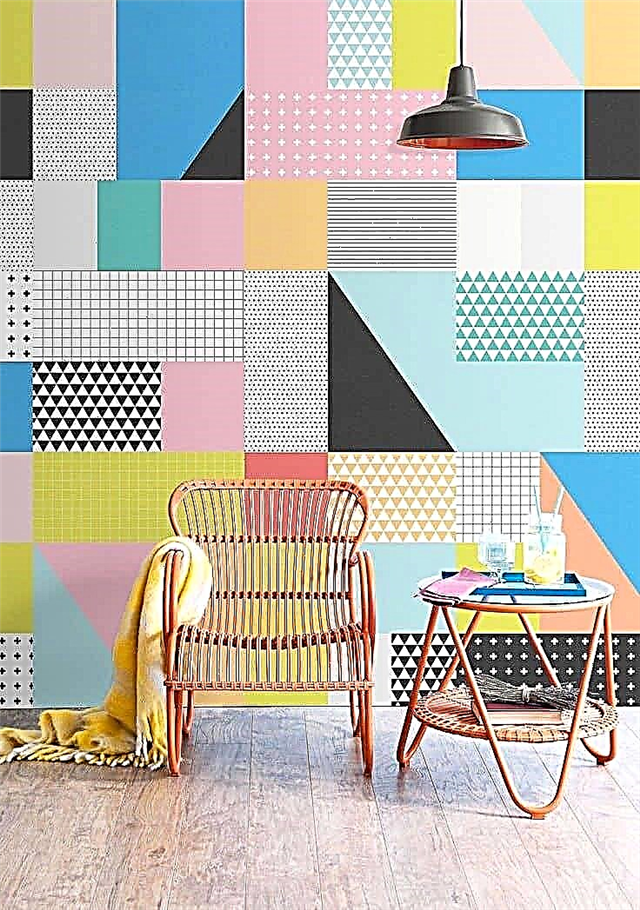
An interesting and unusual option for using multi-colored wallpaper for wall decoration
How to combine two types of wallpaper
Sometimes, to get the sophistication of the interior in a room, it is enough to apply samples of only two types of wallpaper. In this case, it is necessary to determine how the shades on different rolls are combined, for which there are certain rules:
- wallpapers with bright saturated colors should be in harmony with neutral shades,
- a combination of paintings with abstract ornaments and geometric patterns,
- purchase of products from one collection and, preferably, from one manufacturer.
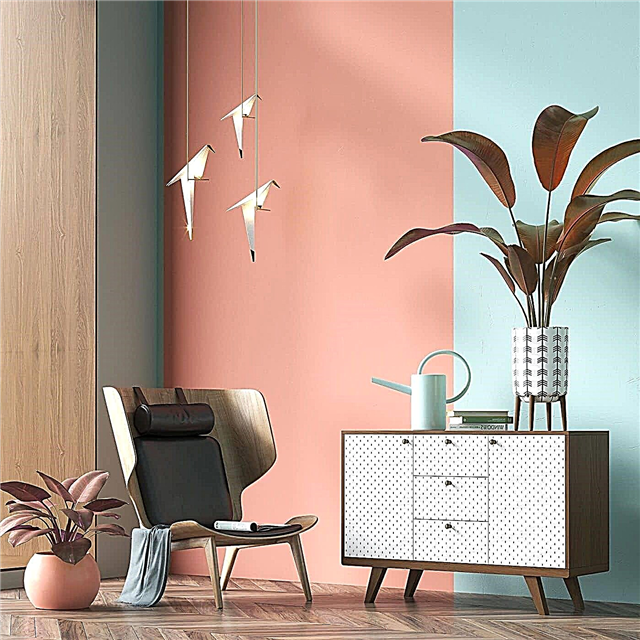
The perfect combination of peach and blue
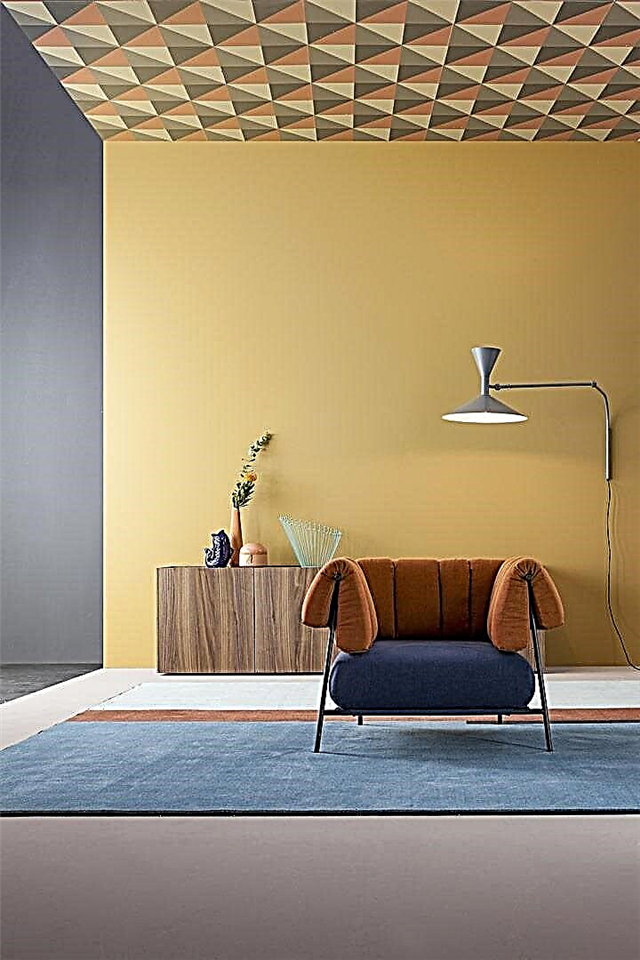
Modern types of wallpaper will look beautiful not only on the walls, but also on the ceiling
When wallpapering two samples, several options are distinguished
- Vertical placement of paintings. Here the effect of increased volume of the room due to the height of the ceiling is achieved.
- Patchwork method. With this method, the horizontal and vertical sticker of the paintings are combined, and elements of different sizes.
- Photowall-paper. The improvisation of such materials with ordinary wallpaper canvases looks spectacular in children's and bedroom rooms.
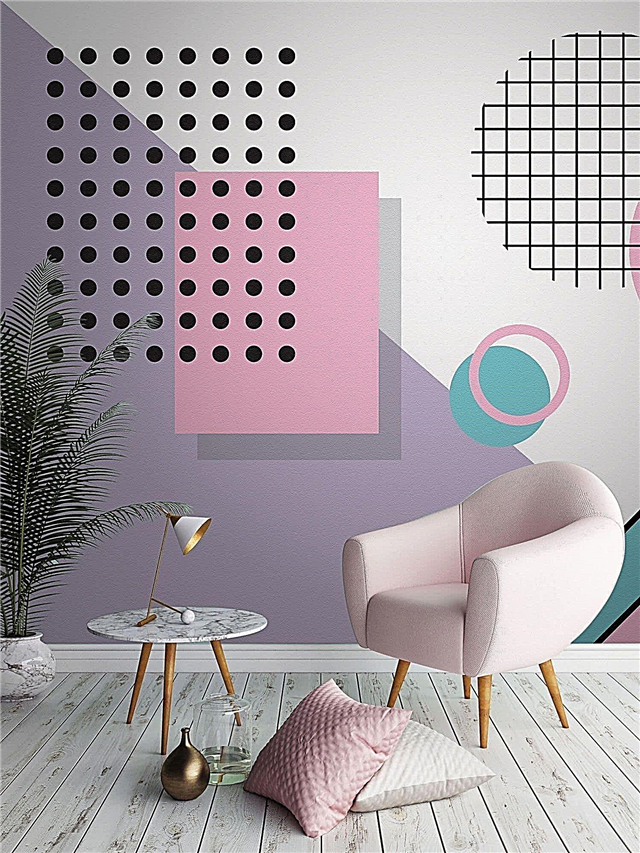
Spectacular 3-D wallpaper with a beautiful design
If you use custom-made wallpapers as wall decor, you will have great opportunities to create a stylish and unique design that will fully meet all your expectations.
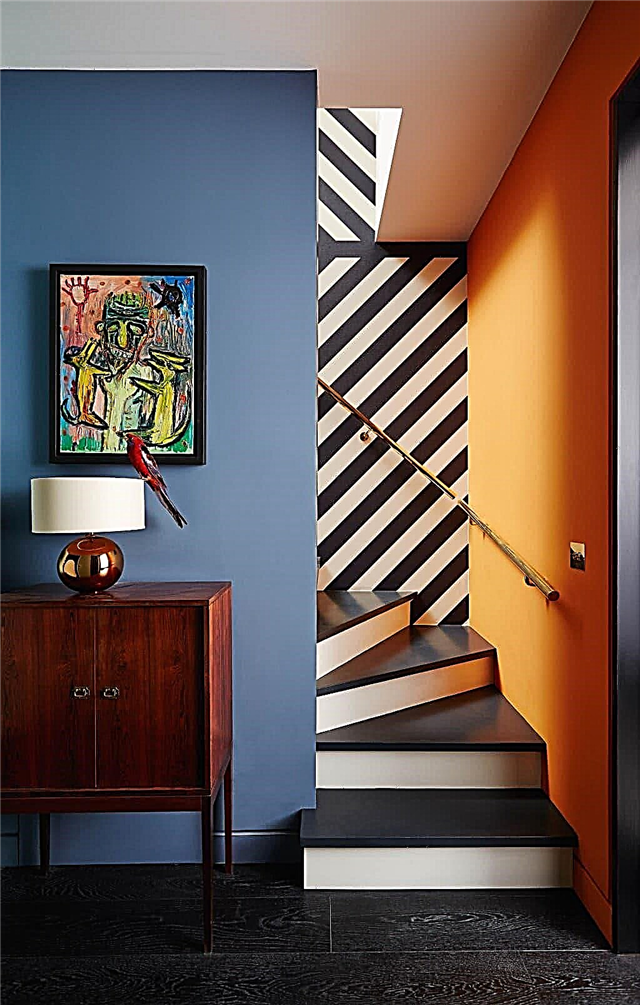
Blue color matches perfectly with orange, especially if there is a dark white contrast between them

Fresh room design ideas in yellow, black and white
In the hall (living room)
The interior of the living room with a combination of various samples of modern wallpaper allows the solution of several problems:
- Highlighting the main fragment of the interior or furniture, while highlighting the most acceptable background.
- Zoning of the indoor area, for example, the definition of the boundaries of the living room and kitchen studio.
- Reducing or increasing the size of the wall by choosing different colors or arrangement of paintings.
- If you want your attention to be concentrated on one wall of the living room, then you can glue the paintings on three piers with the same pattern, and on the desired design with a different background.
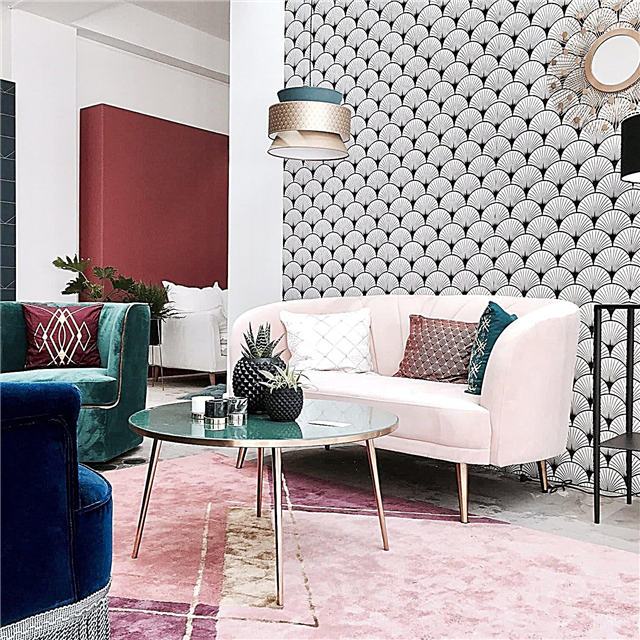
Stylish modern design living room with beautiful wallpaper
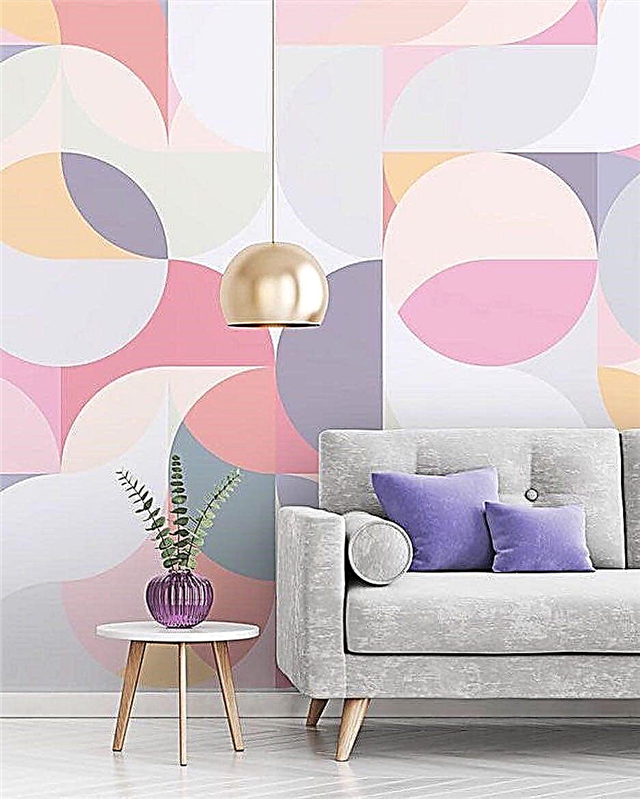
Correct color distribution is the most important factor in decorating walls with wallpaper.
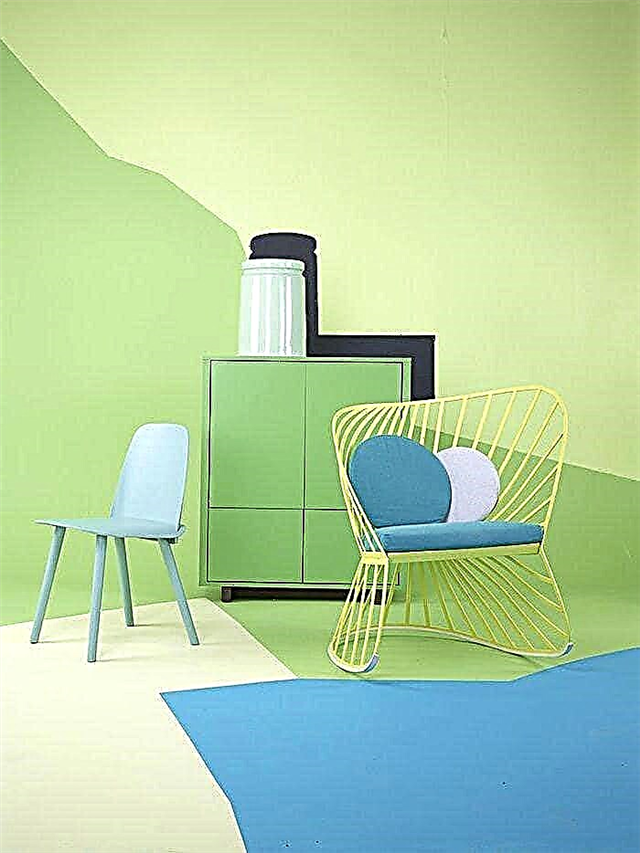
Spectacular contrast of blue and green
In the bedroom
In order to create a cozy atmosphere in such a room, the combination of color shades should be close to identity. In this case, the use of colorful tones is allowed to highlight one of the sleeping areas. A perfect solution would be a combination of ornament with a pattern and plain patterns.
It is believed that the following tones are beneficial for a person
- Beige color. This shade indicates peace, tranquility and facilitates the penetration of an increased stream of light into the room.
- Pink color. A gentle and romantic tone, combined with white or purple, creates the ideal atmosphere in the bedroom.

Wallpaper in white and blue design has a beneficial effect on the emotional and psychological state of a person
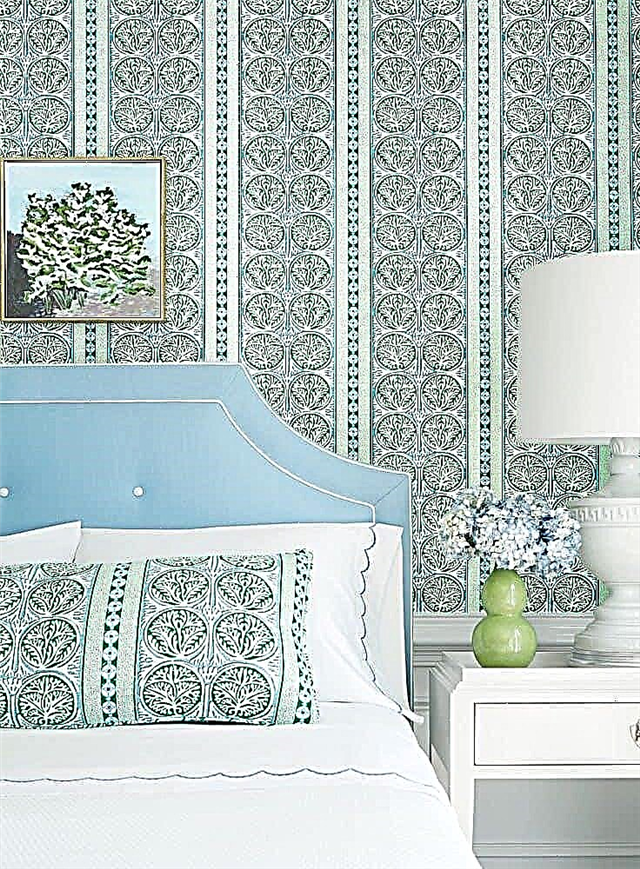
A good combination of mint color with a pale blue headboard
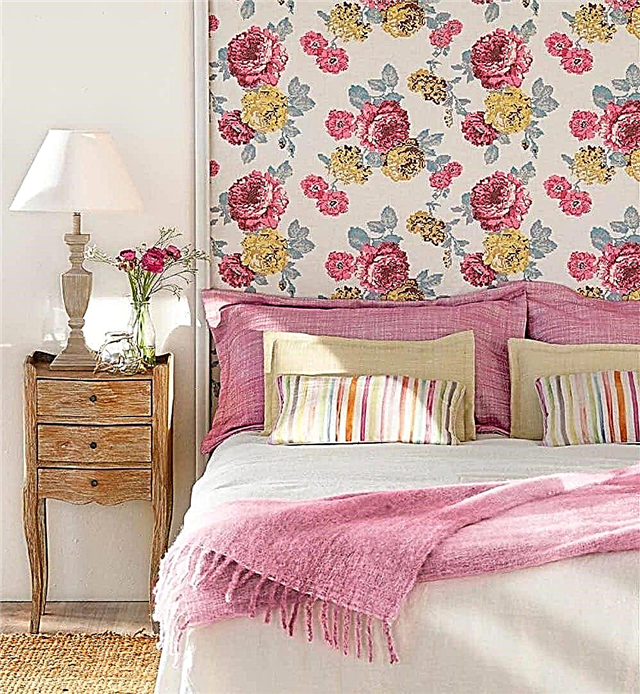
Beautiful provence bedroom

Wallpaper with flowers is very popular when decorating the walls in the bedroom

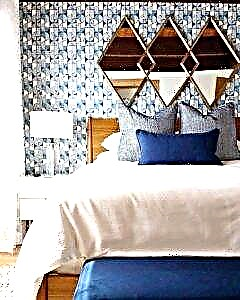
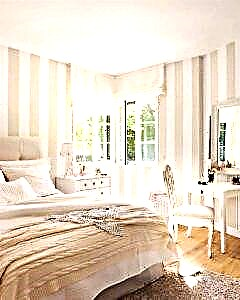
On the kitchen
Currently, there are no specific dogmas in the interior of the kitchen, and any homeowner can determine for himself how he can create a design through beautiful wallpaper on the wall. However, when combining wallpaper in the kitchen, you need to follow some established rules.
Important points to consider
- First of all, it is necessary to take into account the characteristic features of the kitchen: area, lighting, which side of the world the windows face, the presence / absence of a border with another adjacent room.
- When choosing wallpaper, it is necessary to observe the uniformity of the material, the width of the paintings.
- Compliance with color harmony when gluing paintings, while there should not be oversaturation.
- Accounting for the interior of the kitchen and the selection of products by color, texture, - the corresponding kitchen set.
- When buying wallpaper of certain samples, it is necessary to take into account the floor, ceiling, tiles and equipment in the working and dining area.
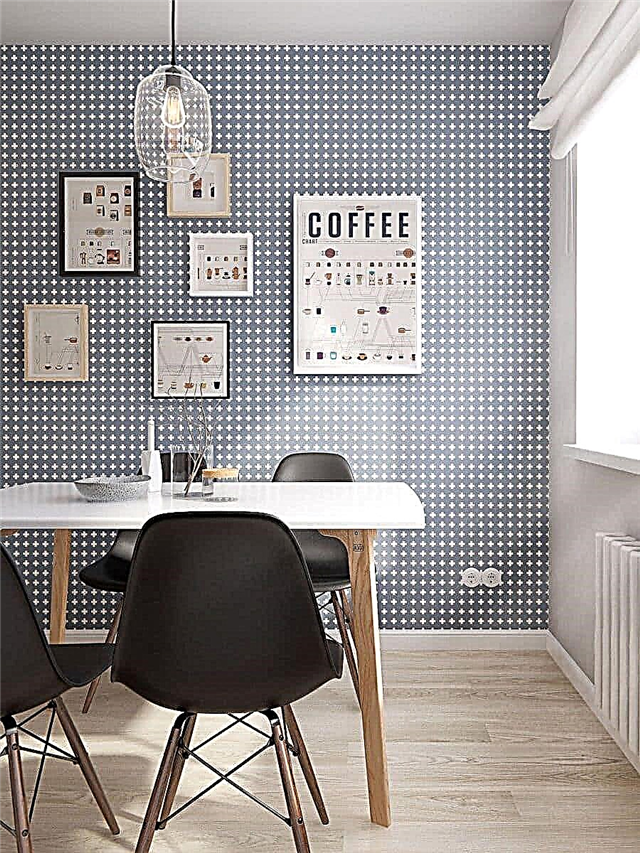
Gray wallpapers in a white cross will be an excellent background for thematic paintings in the kitchen
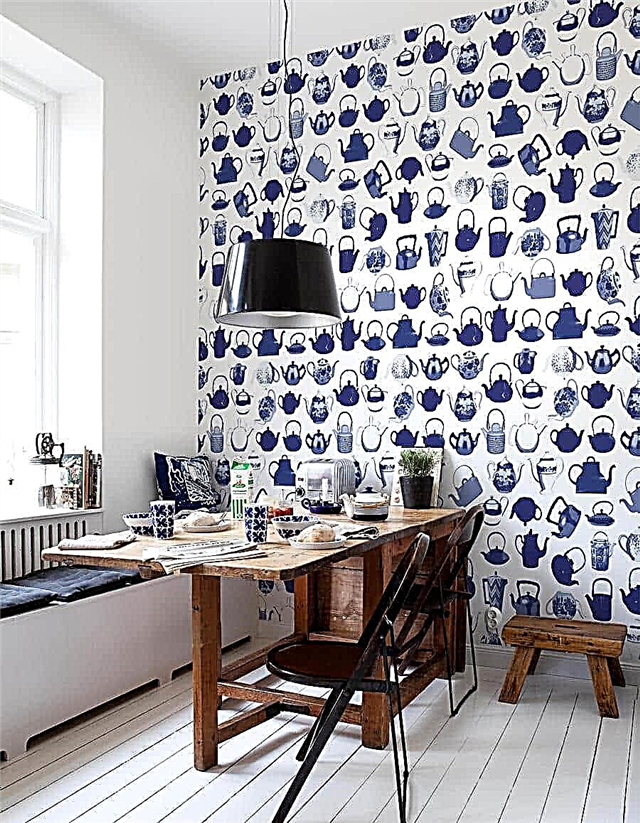
Attractive design of combined wallpaper for the kitchen in the right colors
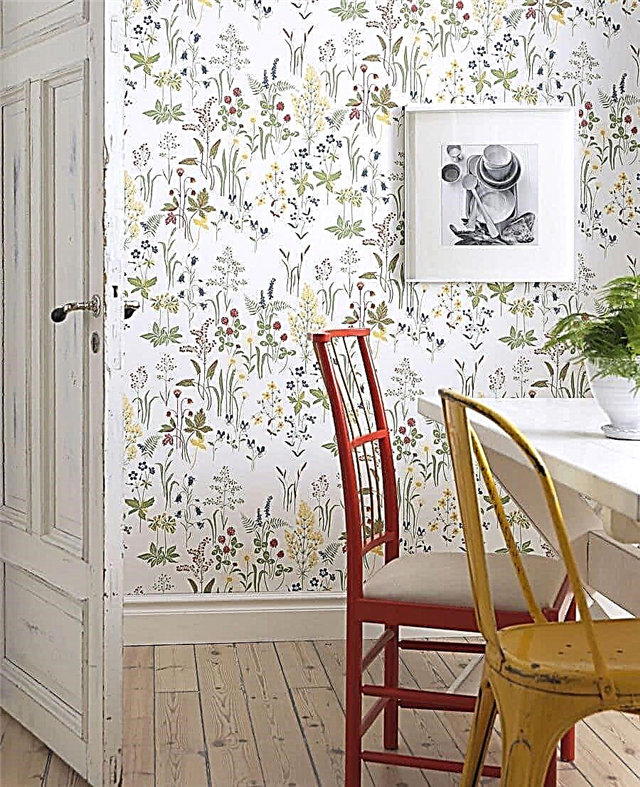
Natural motifs of provence on the wall
When choosing wallpaper for the kitchen, there are many different combinations, but, however, all of them must comply with certain rules:
- symmetries and asymmetries of the pattern and hue,
- combination of plainness and saturation of the front side of the wallpaper,
- harmonious arrangement of paintings vertically and horizontally,
- allocation of a zone (dining and working) by means of wallpaper that is different in ornament, color, material and texture.
It must be borne in mind that the combination of strips in the kitchen should be original, sophisticated, but at the same time to be functional and justified.
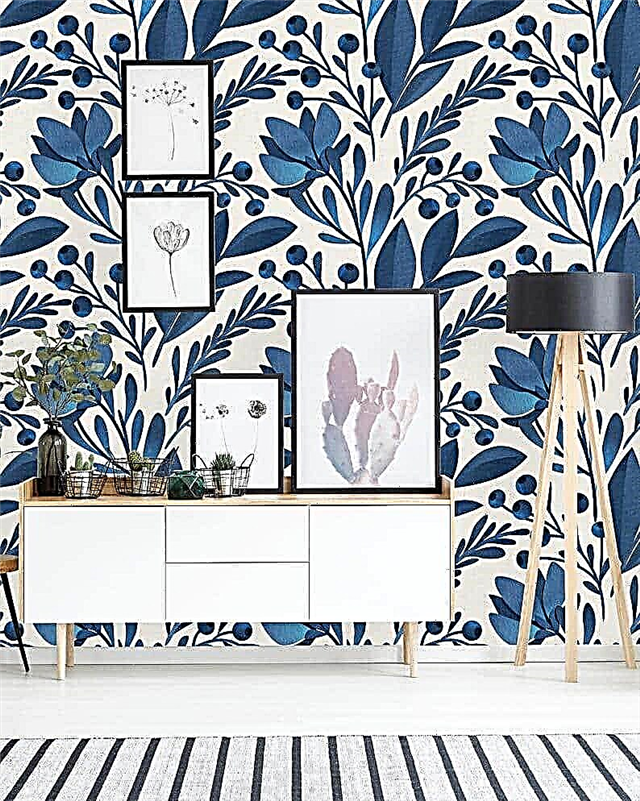
The versatility of white makes it easy to combine with any other color.
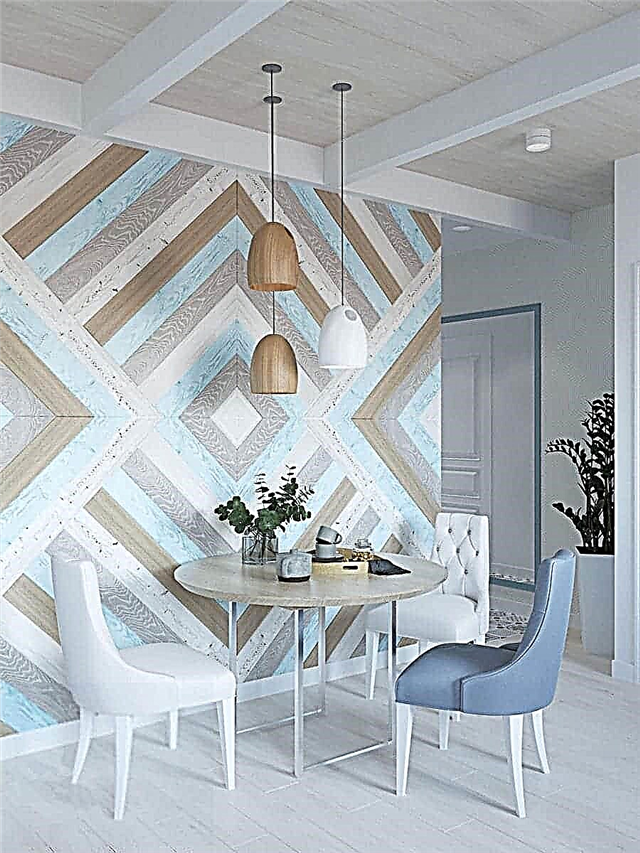
The photo shows a combined wallpaper for the kitchen imitating masonry laminate

Picturesque wallpaper with a very pleasant picture for the eyes
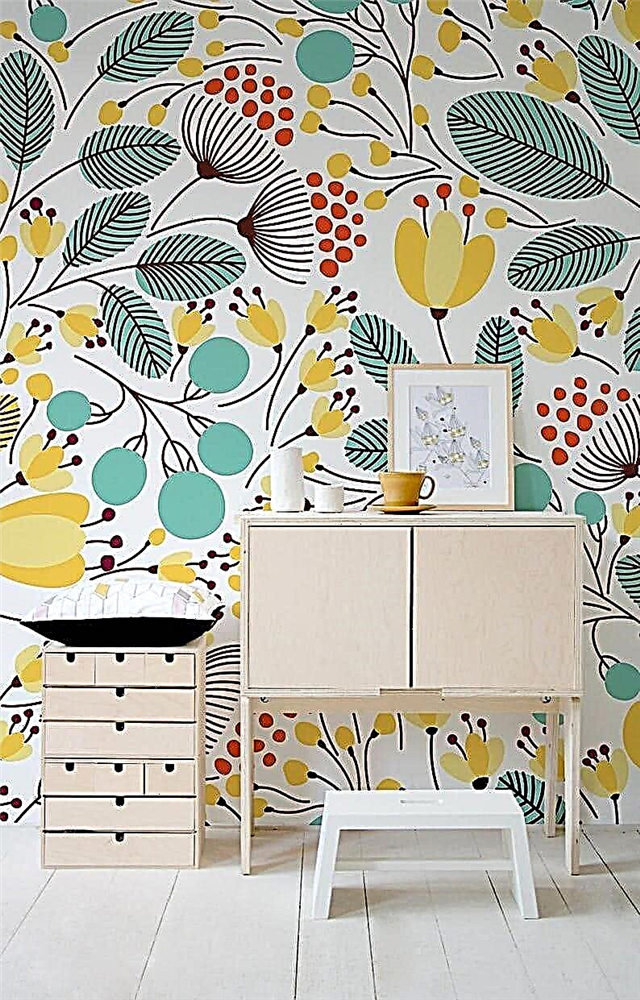
Inspirational color scheme for eco-friendly room design

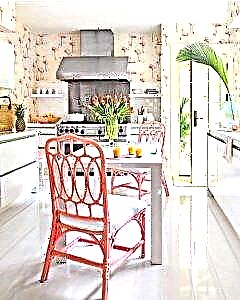
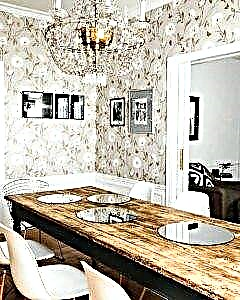
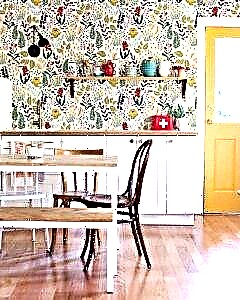
In the hallway (corridor)
- Upon entering the apartment, from the correctly selected interior of the hallway, the guests, first of all, create one or another impression of the owner, his taste preferences. What are the requirements for the design of combined wallpaper in this room?
First of all, they must be moisture resistant, since they periodically have to be wiped with a damp cloth. Therefore, you need to choose samples with a vinyl coating or glass. They will also be stylishly combined with other natural materials: bamboo, wood or cork.
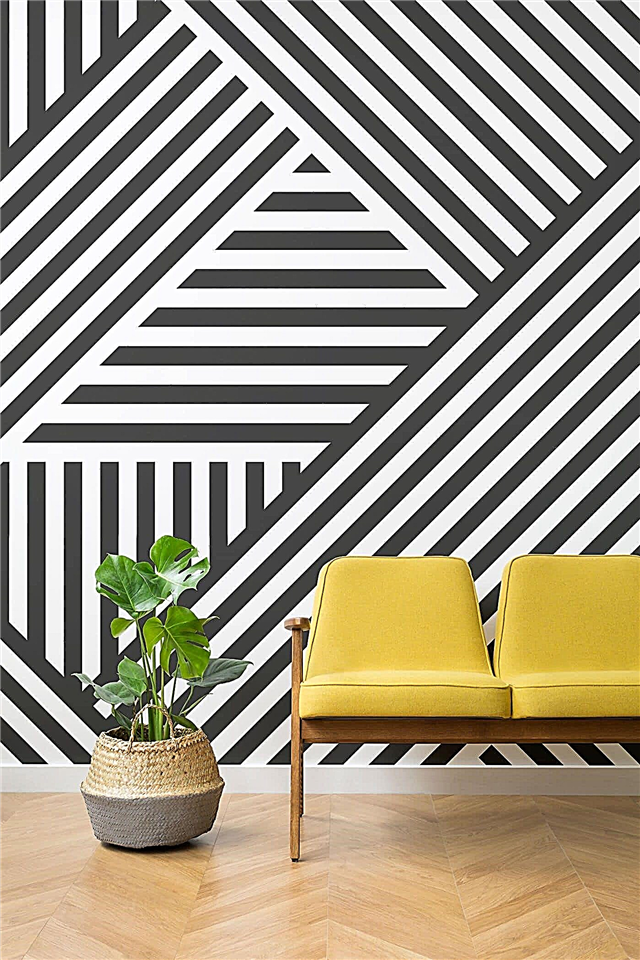
The relevance of striped wallpaper in a modern interior is back in fashion
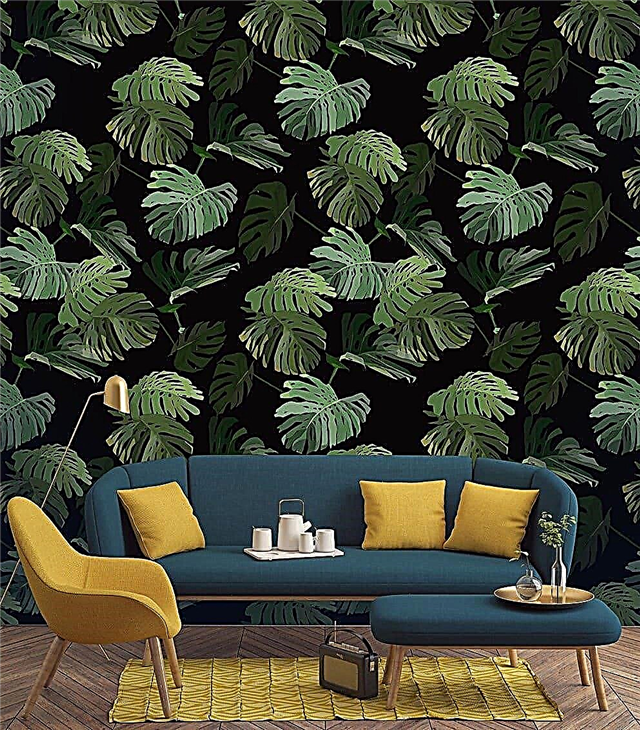
Fashionable wallpapers creating a stunning visual illusion of close proximity to nature
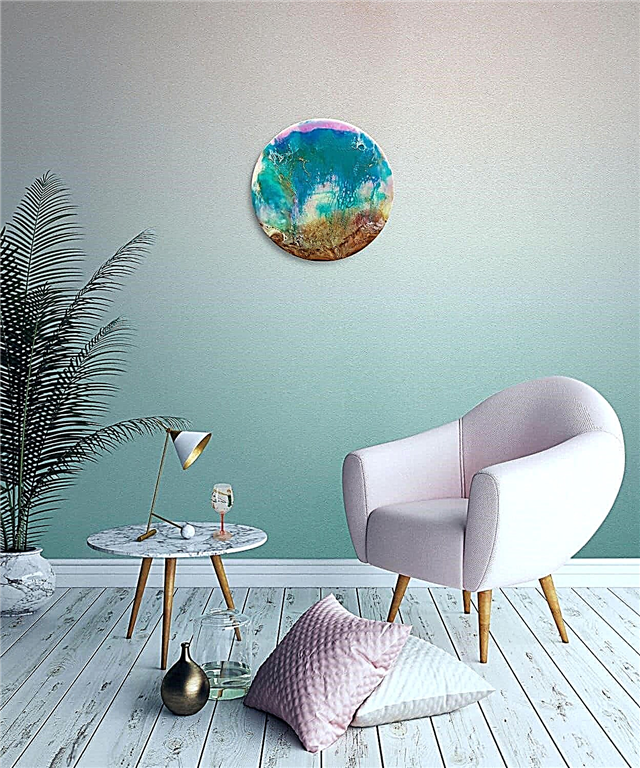
Exquisite minimalist interior
Canvas with a picture
- Technology - Spectrum. Here we have in mind the combination of wallpaper with different shades in one color scheme. Thus, you can combine gold and sand, coffee and beige, blue and cyan, etc.
- Balance method. It is distinguished by a combination of two types of wallpaper. In this case, the main thing here will be a canvas made in one color scheme, and the complement will be wallpaper with brightly saturated colorful patterns.
- Contrast method. In this case, the method of wallpaper that is opposite in shades is used. Moreover, one color is selected active, saturated, and the second - passive, pacified.
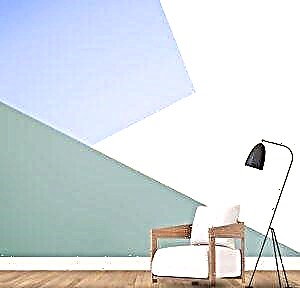
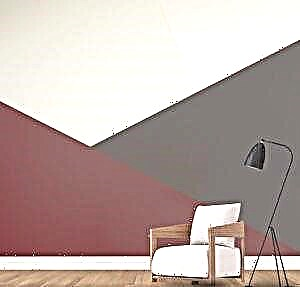
Plain wallpaper
If you decide to use only plain wallpaper, then it is recommended to combine color and texture. Walls that are more lighted tend to become darker and richer. To reduce the size of the wall, you can use wallpaper with a large ornament.
The use of two color shades is designed to make the interior more dynamic. Plain-colored wallpapers are often used when designing niches, where they are picked up by more muted tones.In this case, the combination of materials and textures inside the niche looks effective.
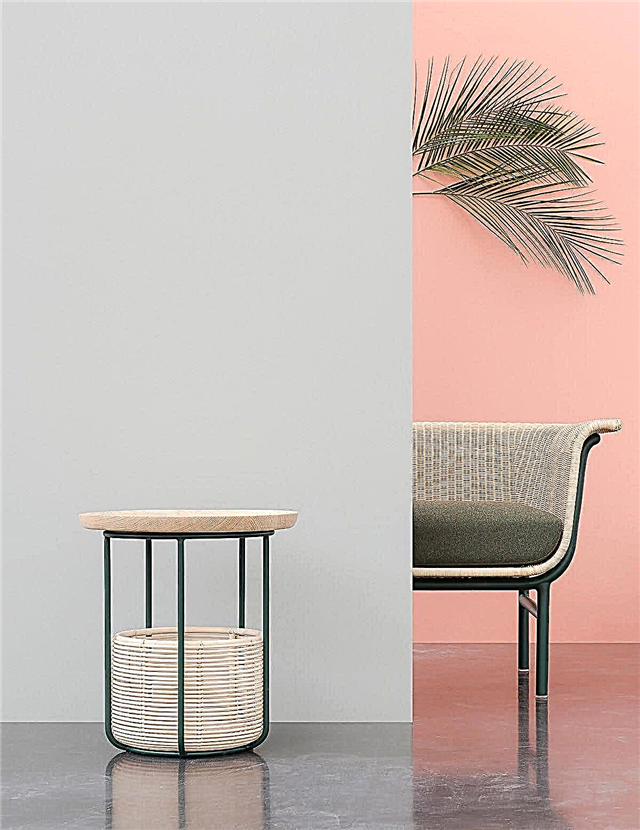
A successful solution for combining gray and peach wallpapers

Spacious fusion living room
Benefits of Using Combined Wallpapers
The combination of wallpapers of different colors has long been included in the category of the usual design option for wallpaper gluing in rooms. After all, wallpapers of several types help to create all kinds of decoration effects, visually change the parameters of the room, hide defects on the surface of the walls, and also highlight the advantages of this design.
Useful tips and tricks
Highlighting dignity and hiding defects. Highlighting a wall with a different pattern or a wall on a wall, this place becomes a focal point, attracting the attention of guests and household. At the same time, attention is diverted from another, undesirable lack of space - bumps on the wall or a defect in the ceiling.
- Zone designation. Sometimes in one room several rooms are connected, different in their functionality. And in this case, non-standard solutions using wallpaper with different patterns and colors will help.
- Visual effects. If you paste light wallpaper on long walls, the narrow room will visually expand. And vice versa, if you cover the short walls with shades of darkened color, the room will look narrower. A square room will look most advantageous if one of the walls is glued with lighter wallpaper than the others.
- Emphasis on the wall. This technique is the simplest combination of wallpaper. Usually, in a room, one of the walls is thus made, but sometimes this method of isolation is also applied on adjacent walls. Of course, in such cases, the accent wall is distinguished by either a large ornament or color saturation, and sometimes wallpaper is also used.
- Focus point. Here the focus should not be on the entire wall, but only on a specific fragment. For example, with a canvass with a different color, a false fireplace, a gallery of paintings, a place to relax, etc.
- Wallpaper decoration. If you place small fragments of wallpaper in a frame, you can create an unusual decorative design.
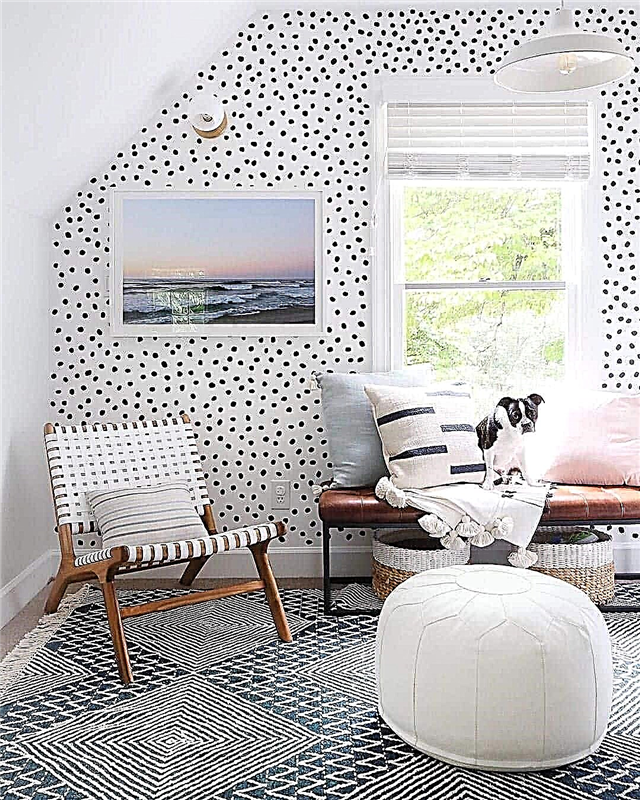
Skillfully selected interior details, where each piece of furniture blends perfectly with the color of the walls.

Floral motifs on wallpaper with a white background will always be very relevant.
Thus, using the combined techniques of wallpaper sticker, you can radically transform the design of the room. A harmonious use of colors makes it unique.
Plaster
The material is not only used for leveling walls. When decorating in antique, arabic or gothic style, decorative plaster is indispensable. She will embody the beauty of marble, ethnic plot. With its help create pictures, applications. Chic panel can be placed only on one wall. But there are many ideas on how to combine two popular materials.
The accent may be the plaster itself, the image on it. Or, it becomes the background for the wall where bright photo murals are pasted.
Bright wallpaper in the interior
Good visual examples of the compatibility of the wallpaper in color, pattern and texture are wallpaper collections. Manufacturers produce ready-made combining sets of several background and accent wallpapers. And we must give them their due, the wallpapers within one collection really go well together:
As you can see from the photo, color is only 1 of the ways to combine wallpapers. Wallpaper inside the collection is not combined because their colors are combined. The point is in the drawing, texture and most importantly in color saturation. About the importance of saturation in the combination of colors in the interior, we already wrote in detail, all this works for a combination of wallpaper.
The basic two-tone combinations remained the same. White and gray are universal background colors, they are combined with absolutely any bright. If you want to use non-white color as the base color, then see the compatibility table using the link above. As an example for a photo, background white and accent purple:
Such simple combinations work with other colors:
Because Wallpaper is glued to the wall with tubes, there is no problem to dock them on one wall. In this case, the issue of compatibility is especially relevant. Photo examples:
Calm neutral colors wallpaper
The main thing is not to forget that the walls are just the background. Many people make the mistake of choosing too bright colors for the wallpaper. Often this happens due to the fact that during the planning we imagine the future room, and we want it to be bright. At the same time, we do not take into account that in real life the apartment does not look at all like in the drawings or photos only after repair. The rooms have furniture, things, appliances, curtains, etc. and this all also has its own colors. If at the same time the walls are bright, porridge can turn out. One bright wall is almost always a good idea. More is risk.
Wallpapers can be accented not because of color, but because of an interesting texture. Here, for example, wallpaper from mica (fine sand). The photo is not very visible, but in reality the accent is quite clear:
In modern design, monophonic wallpapers that act simply as a replacement for paint are in fashion. They do not make any accents and do not draw attention to themselves at all. And here is a photo of the proof that this is quite an interesting boring option.
To summarize 7 basic principles:
- If we are looking for budget wallpapers, then only one-color without drawings and patterns.
- We cover most of the area of the walls with calm background wallpaper, one maximum two bright accent walls.
- We select the wall least loaded with other objects as an accent, located on the axis of symmetry.
- You can understand the principles of compatibility of wallpapers by looking at ready-made collections.
- According to the combination of wallpaper colors, the same theory works as for any other materials. Pay attention to saturation.
- Basic background colors with a minimal chance of making mistakes - white and gray.
- Wallpaper does not have to be the center of attention. It is possible for your style you need to choose the most neutral options, and add a twist to something else.
We almost forgot: the photos convey the appearance of the wallpaper very poorly, you always need to watch them live. We hope our theory was useful to you, good luck in the repair!
With timber and wood
The combination of wood and wallpaper is not a new technique. It has been used for more than one century. Most often, the bottom of the wall is finished with wooden panels, and wallpaper is glued to the top.
There are wallpapers that themselves imitate stacked logs, worn boards or insect-eaten wood bark. They can be beaten in the interior of both a city apartment and a country wooden house with beams under the ceiling and walls made of timber.
As in the case of stone, a completely wooden environment must be diluted with something to give the room a cozy residential look. The bar in combination with light wallpaper is widely used for decorating cottages, cottages in a rustic, Scandinavian style. Fashionable now bamboo, cork wallpapers will fit well into the wooden walls.
Conclusion
To create a stylish and harmonious design, they are first determined with the goals that they want to achieve by combining. To create an interior that doesn't look like anything, you need to study the technique and rules for combining wallpaper. Directories can do a good job, where among the presented options you can always find the one that is most suitable for a particular room.
Project development, its implementation can be entrusted to professionals. If you take up this business yourself, life will definitely acquire many new colors.

